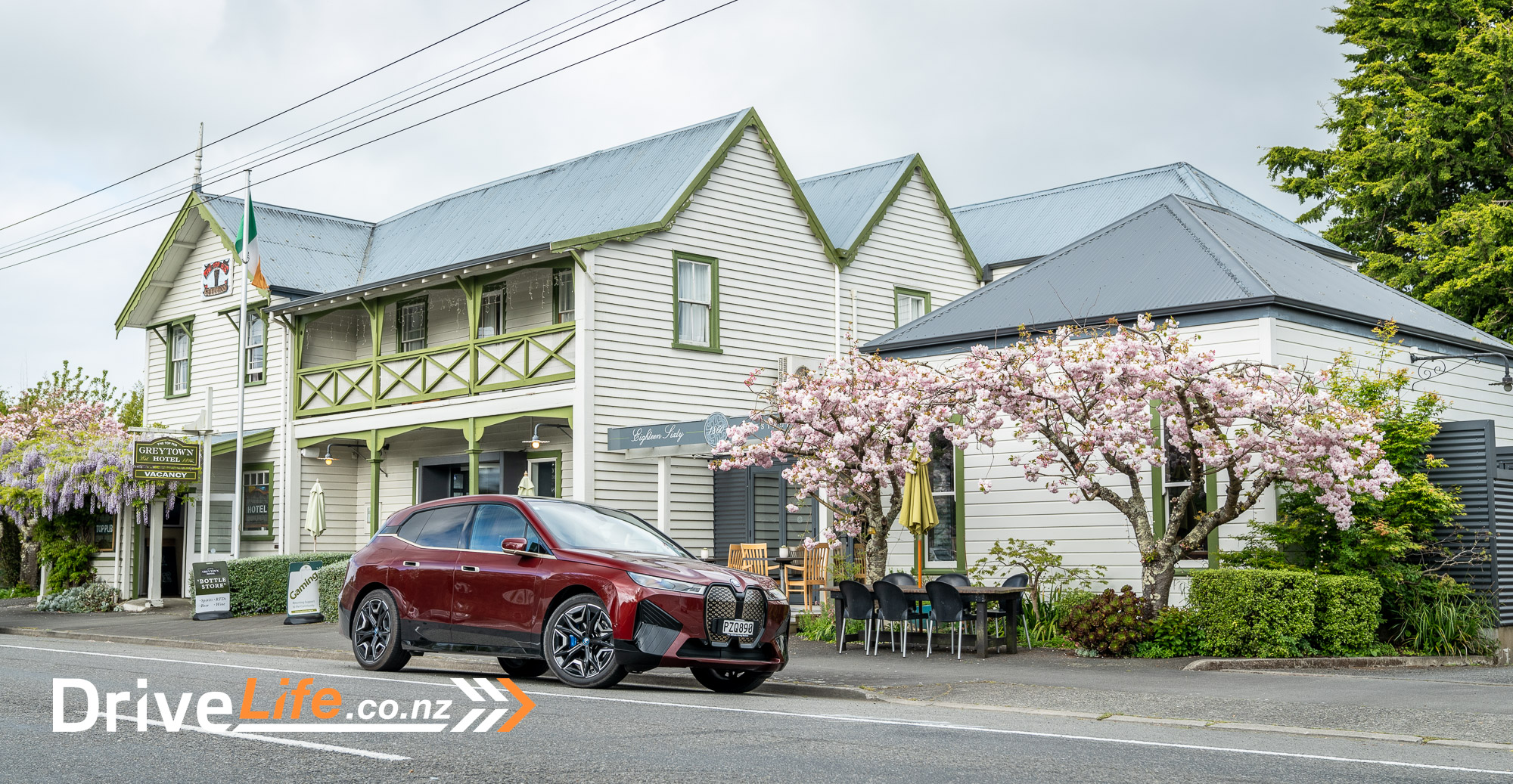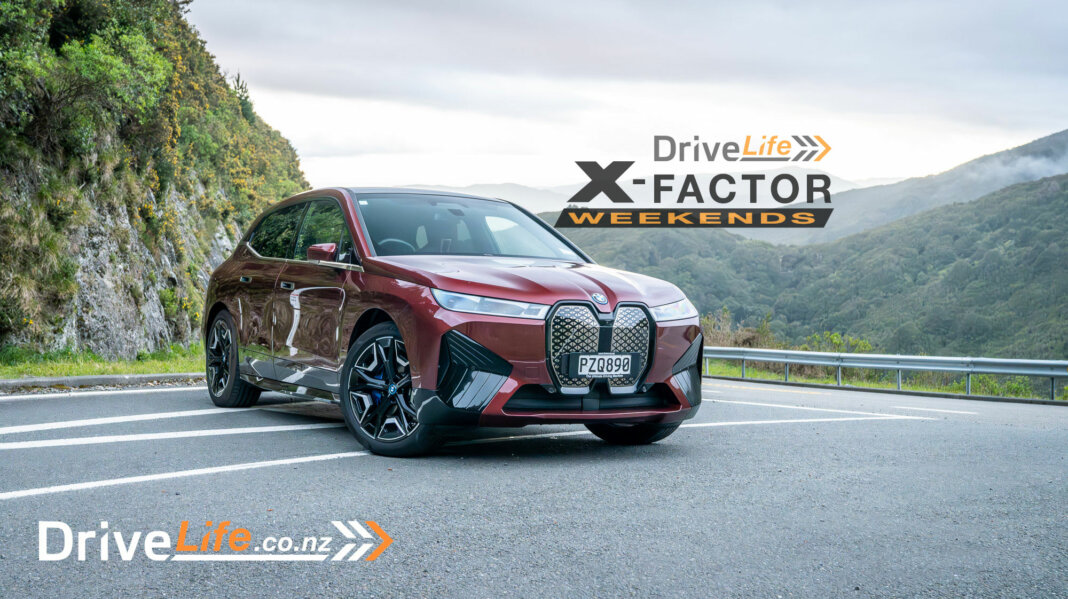DriveLife has partnered with BMW New Zealand to showcase some of the amazing landscapes, roads and attractions in New Zealand while promoting sustainable mobility. BMW is committed to this topic and has challenged us to take to the roads in a number of BMW’s electric vehicles to experience the superb driving capability and drive range. This collaboration reflects the growing trend towards electric vehicles globally and in New Zealand.
A recent study conducted by BMW has shown that 53% of New Zealanders would consider purchasing an electric vehicle at some point in the future. With the X-Factor challenge, DriveLife will see how far these electric vehicles have come and also encourage people to experience the versatility of driving them on several adventurous weekends away, across beautiful New Zealand. The same survey suggests electric vehicle ownership will surpass combustion-powered vehicles by 2035 in New Zealand. That’s a bold claim, which means they have to be able to handle some travelling, as Kiwis love their road trips.
Vehicle – BMW iX xDrive50
Our first X-Factor weekend starts in Wellington and heads to the Wairarapa for the weekend where we will stay at a luxury country retreat, see some amazing local attractions, visit some vineyards and get in a little bit of shopping too. The Wairarapa is an interesting location for EVs as there are limited numbers of charging stations across the region. As 3 out of 4 New Zealanders are concerned about running out of charge due to the lack of nearby charging stations, it’s a great way to put the first vehicle through its paces.
It’s also the first time for me to take an EV on a scenic road trip. Most of the EVs DriveLife reviews slot into our daily lives, but this one experience will be different and should help clear the air from some EV concerns or superstitions.
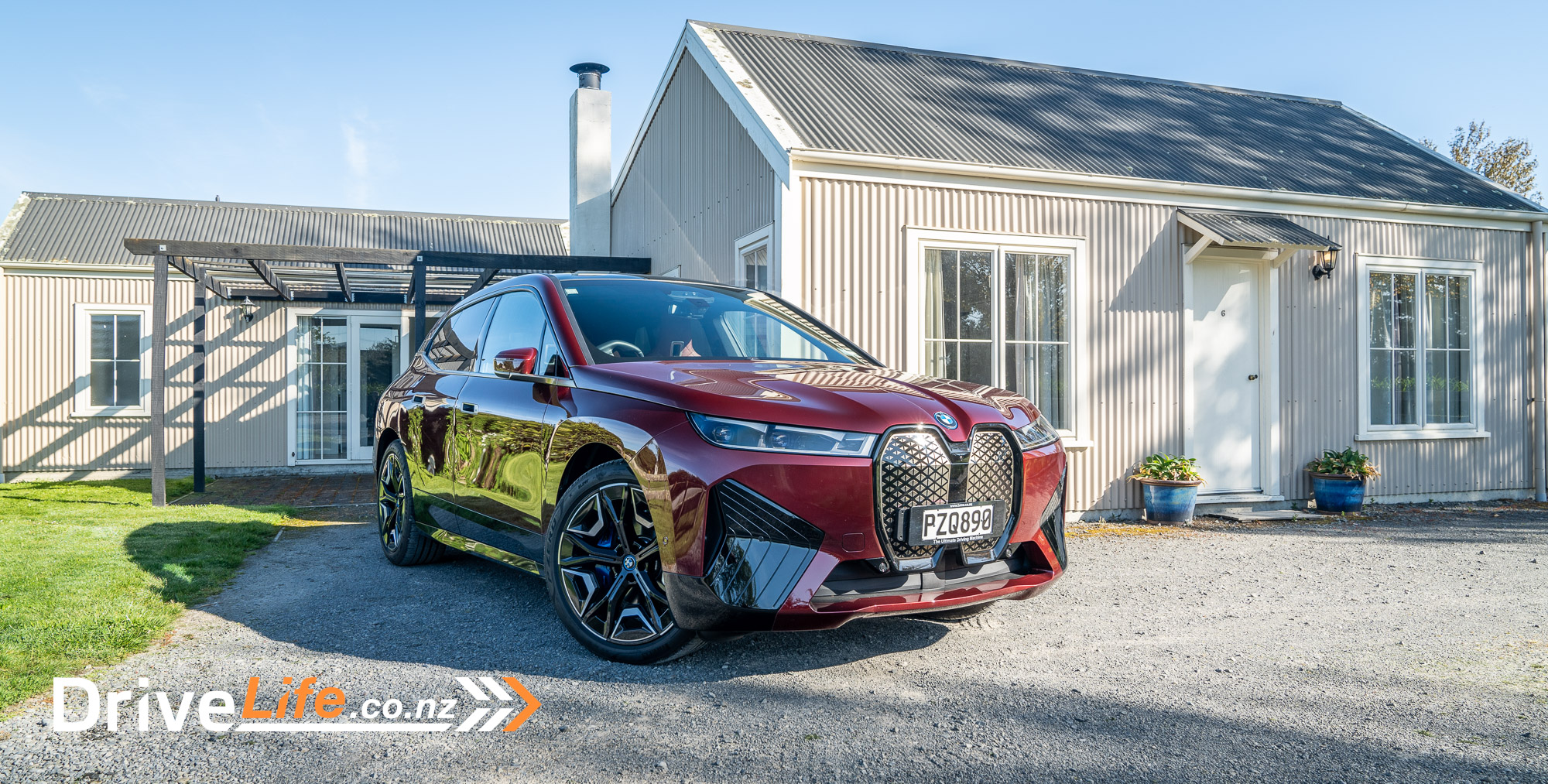
It’s the iX – a flagship model BMW first introduced in 2021 and which brought to market an array of firsts in the areas of luxury and technology – that we will be driving this weekend. The variant we have is the BMW iX xDrive50, a very well-spec’d and high-end product. The iX has an advertised range of 585-626 km which is very impressive. What we have seen in the past through many of our full-length car reviews, is that these numbers can more often than not be in perfect or ideal situations. Our mission is to challenge these numbers and see how real-world usage impacts the iX.
This is not a cheap car, starting at $207,800, although it comes fully loaded with a huge range of features and a fully electric drivetrain. Our vehicle came with several additional features; seat ventilation, sun protection glazing and a towbar that pushed the price up to $213,100.
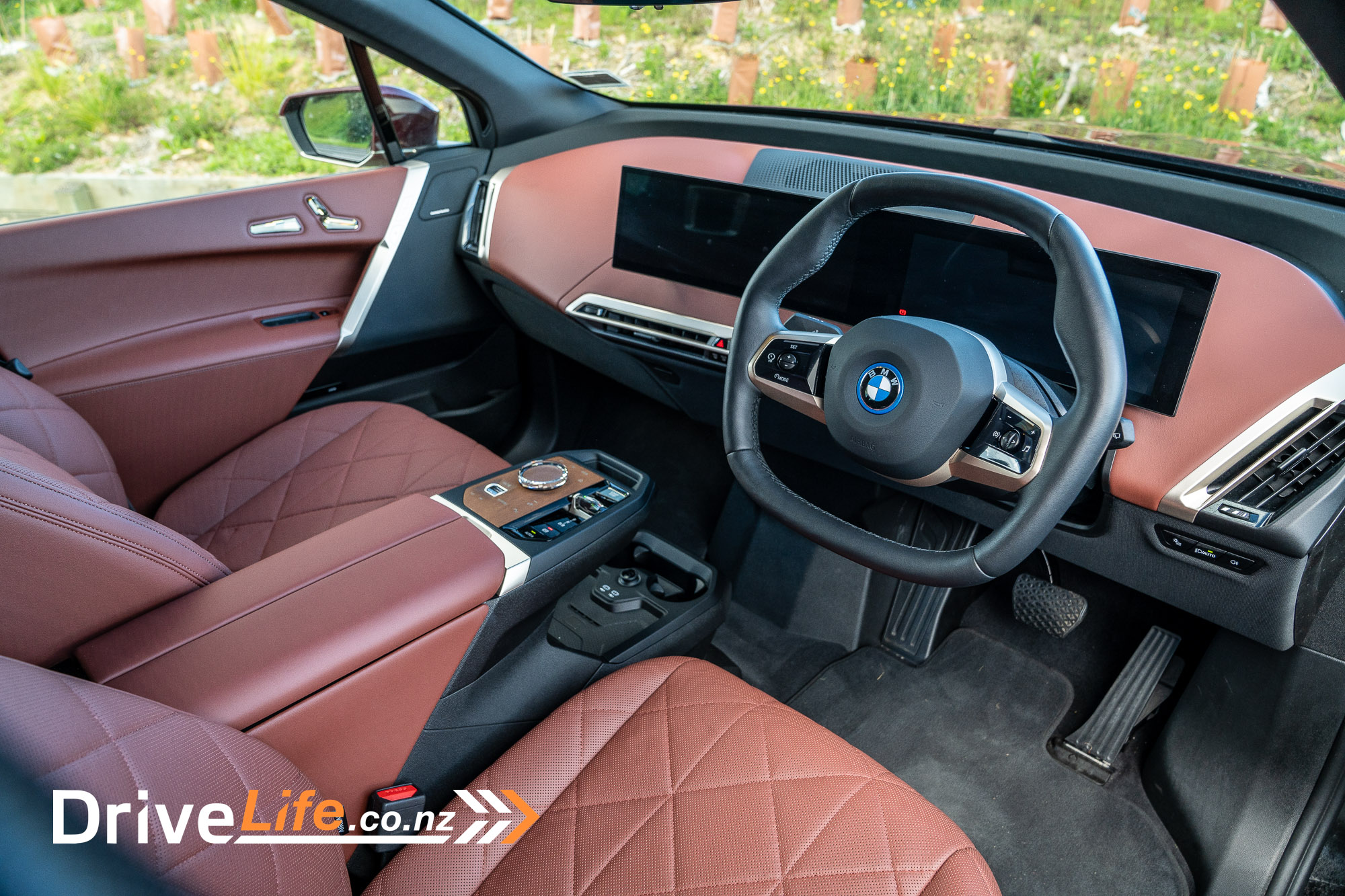
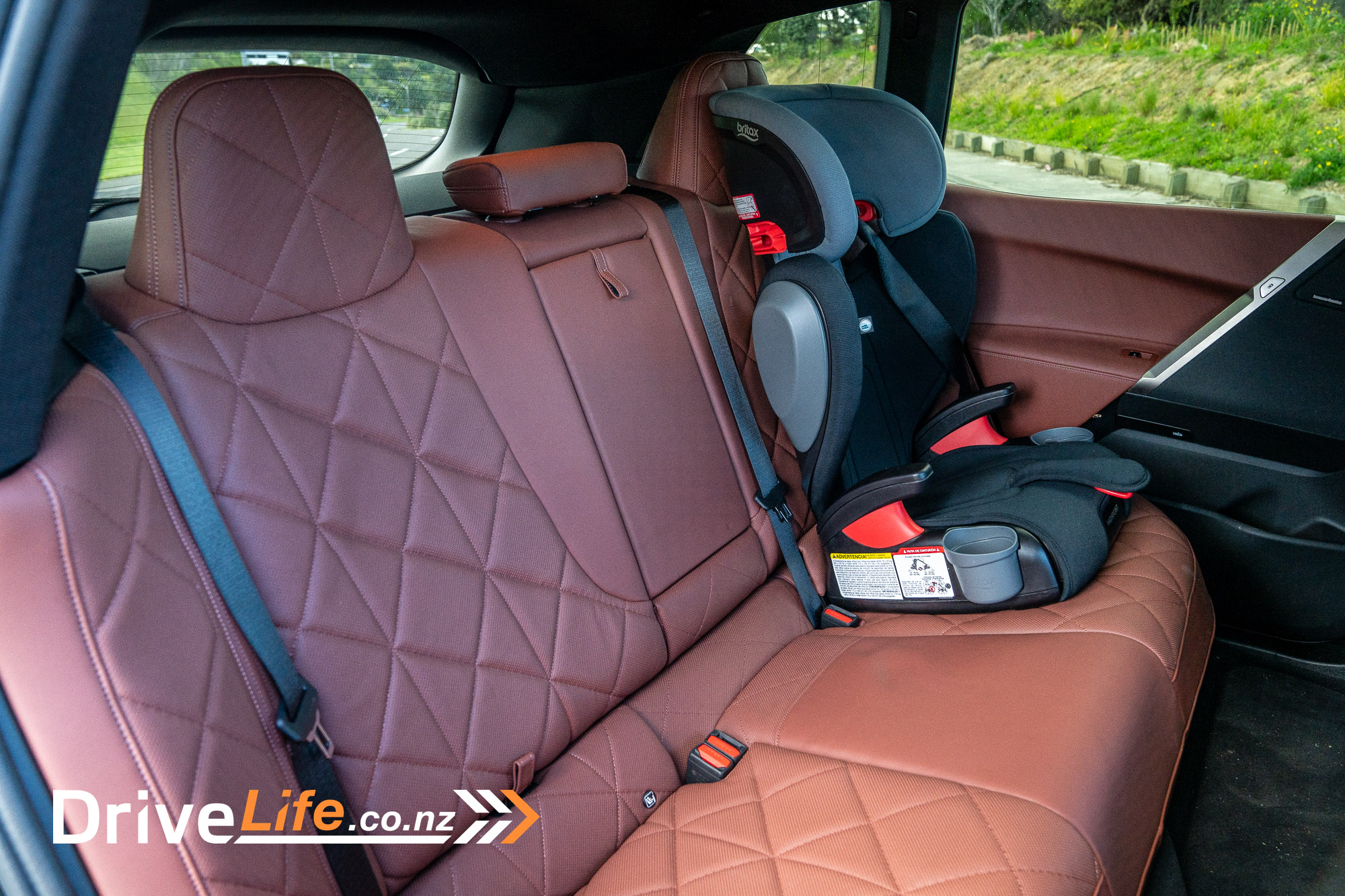
The inside of the iX is a beautiful space with very nice materials and superbly comfortable luxury seats. I really liked the glass roof, which with a touch of a button went from clear to smoked. Very handy to have during the summer, it still allows light in but will help keep the vehicle a little cooler inside. I really love the open space in the front cabin. The space that is normally taken up by a centre console under the dash is free. I also preferred where the cup holders were placed. At first, I thought it was a strange place for them, as they are normally dead centre, but then loved it as it gets them out of the way, and even better if you use large drink flasks. The overall cabin experience is spacious and open.
Day 1, Friday: Wellington to Wairarapa
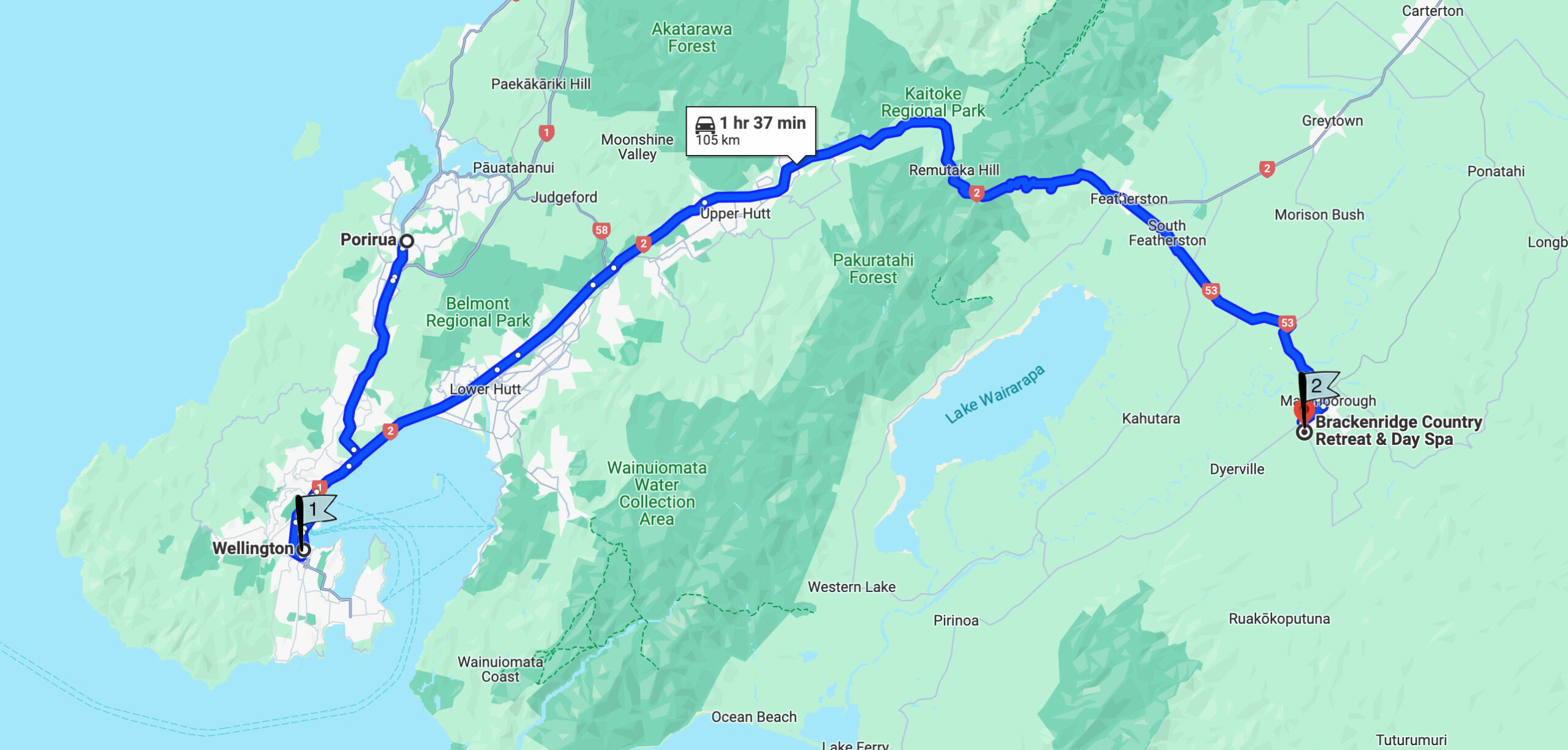
Like many people, we can’t always just pick up and go, so after I had sorted things and packed, we readied ourselves to leave Wellington for the weekend. As it was Labour Weekend, I thought it best to head into Wellington for some dinner to avoid the traffic queues that form on long weekends heading over the hill to the Wairarapa. It was 4:30 pm leaving Porirua and we just needed a quick stop for dinner to let the traffic ease. I had heard about a new Chinese Hot Pot restaurant that had just opened in Wellington, Babaili Malatang on Dixon Street. It was busy but we got a seat and the food was really good; we’re definitely going back to try more of what they have to offer.
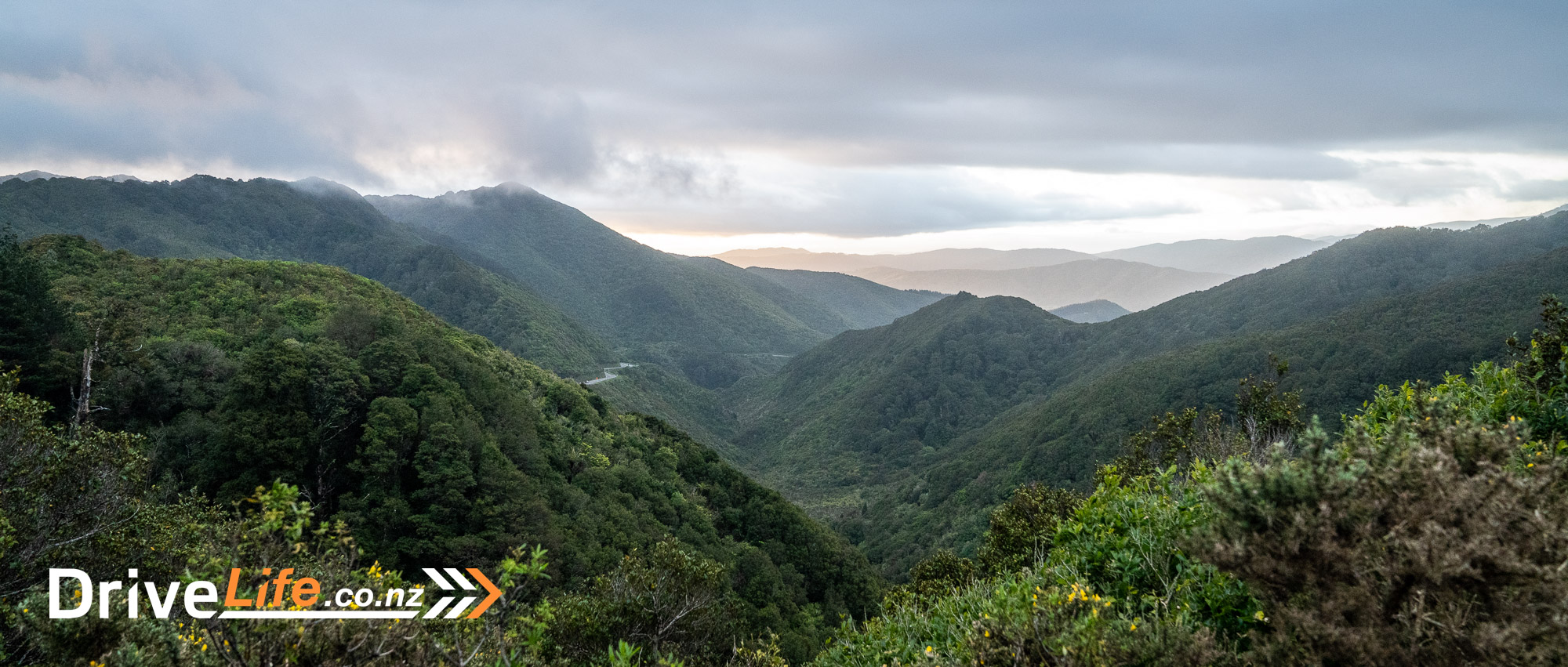
After dinner, it was time to hit the road and make our way over the Remutaka Hill (SH2) to Martinborough and our accommodation for the weekend, at Brackenridge Country Retreat and Day Spa. It’s worth noting that the range of the iX was reading 93%, 515km range on the battery as we left Wellington.
The roads had cleared up as we passed through Upper Hutt, in preparation for the road over the Remutaka Hill. This road is 20 km from Te Marua in Upper Hutt and runs to Featherston in the Wairarapa. Twelve kilometres of this is over the hill on a continuously twisty road that climbs up 555 metres and down on the other side. If there is a lot of traffic on this road, it can be a bit arduous. However, when you get a clear run it’s a great road to drive.
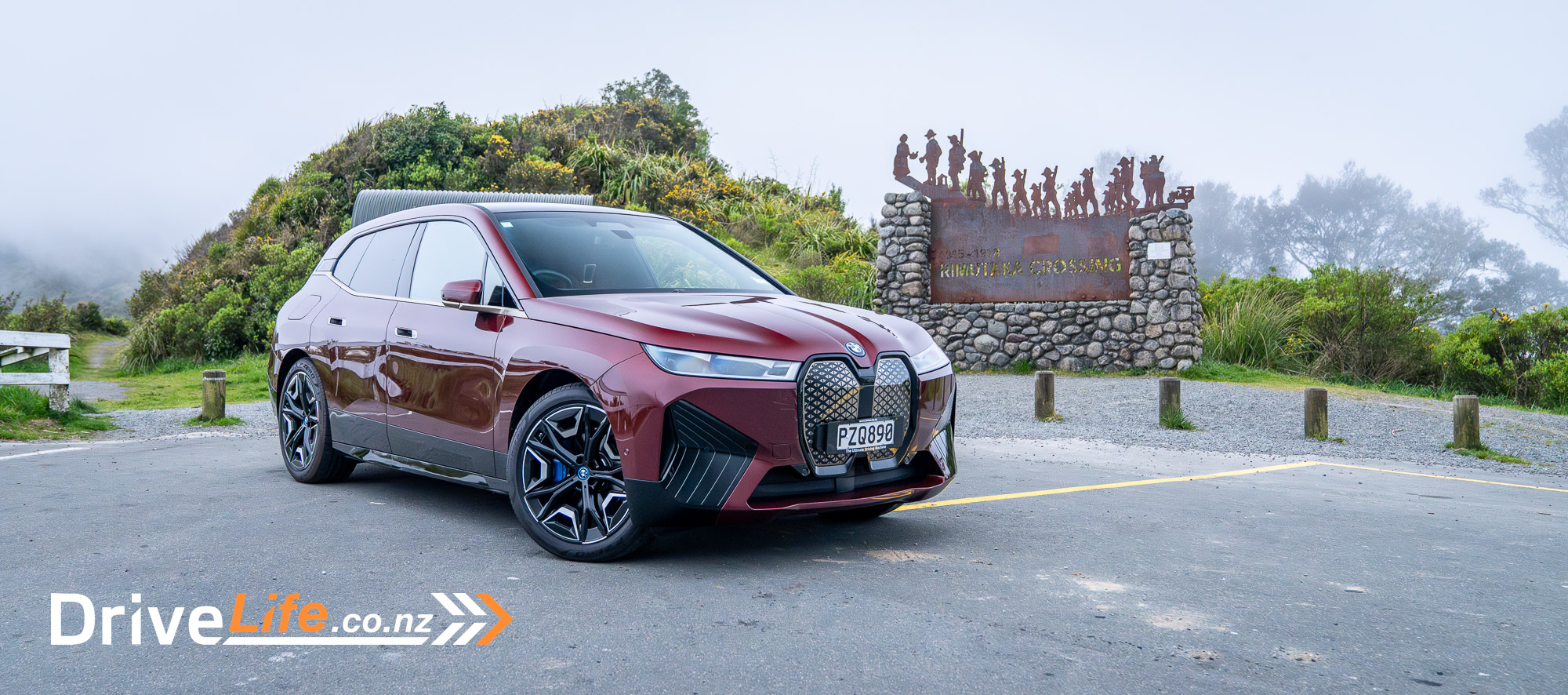
The iX handled it well, without much concern about power usage on the way up the south side of the road. Coming down the north side, I let the regenerative brakes feed energy back into the batteries, which gained back 3%. Something to note about this weekend is that I had put the iX into its Efficient driving mode so that I get the benefits of the range and the features it offers to help you as a driver, get the most from your electric vehicle. I’ll touch on some of these features later.
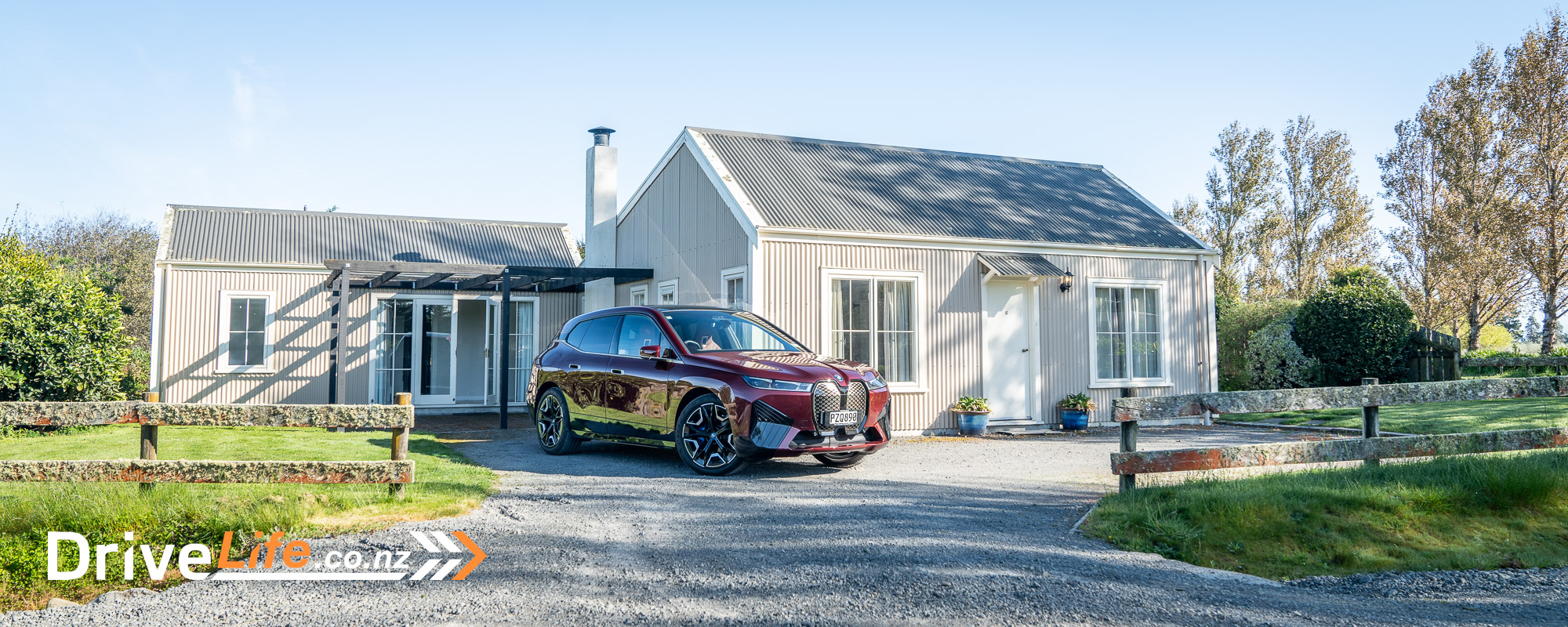
It was dark by the time we got into Martinbrough, however, our iX was equipped with BMW’s laser-light headlights. When you’re in the dark country with these headlights, it’s like turning nighttime into daytime. They light up the entire road up to 600 metres ahead, and if there is some traffic coming down the road towards us, the adaptive part of the laser headlights will block the light out that hits them, while keeping the full beams on the rest of the road.
The reception was closed when we reached Brackenridge Country Retreat and Day Spa. We knew this, as the manager had already called us to check in on our arrival. She made the arrangement for a self-check-in via email, so we just went straight to our cottage. It had been a busy week, so it was great to be there and to get ready for the activities planned for the next few days.
By the end of Day 1, we had covered 105 kilometres and the BMW iX had indicated we had 72% battery remaining. We had asked if Brackenridge had any EV charging facilities, which they didn’t. However, the lovely staff had no problems with us plugging into the mains via our extension cable. Some might say this is cheating as we are not using charging stations. It’s not cheating: it’s smart, and much like our mobile phones, it’s better to charge often in small amounts which gives us the versatility to use it when we need it. Why not charge where we are staying? Good planning is key for both Internal Combustion Engines (ICE) and EV vehicles for any trip.
Day 2, Saturday: Martinborough to Castlepoint
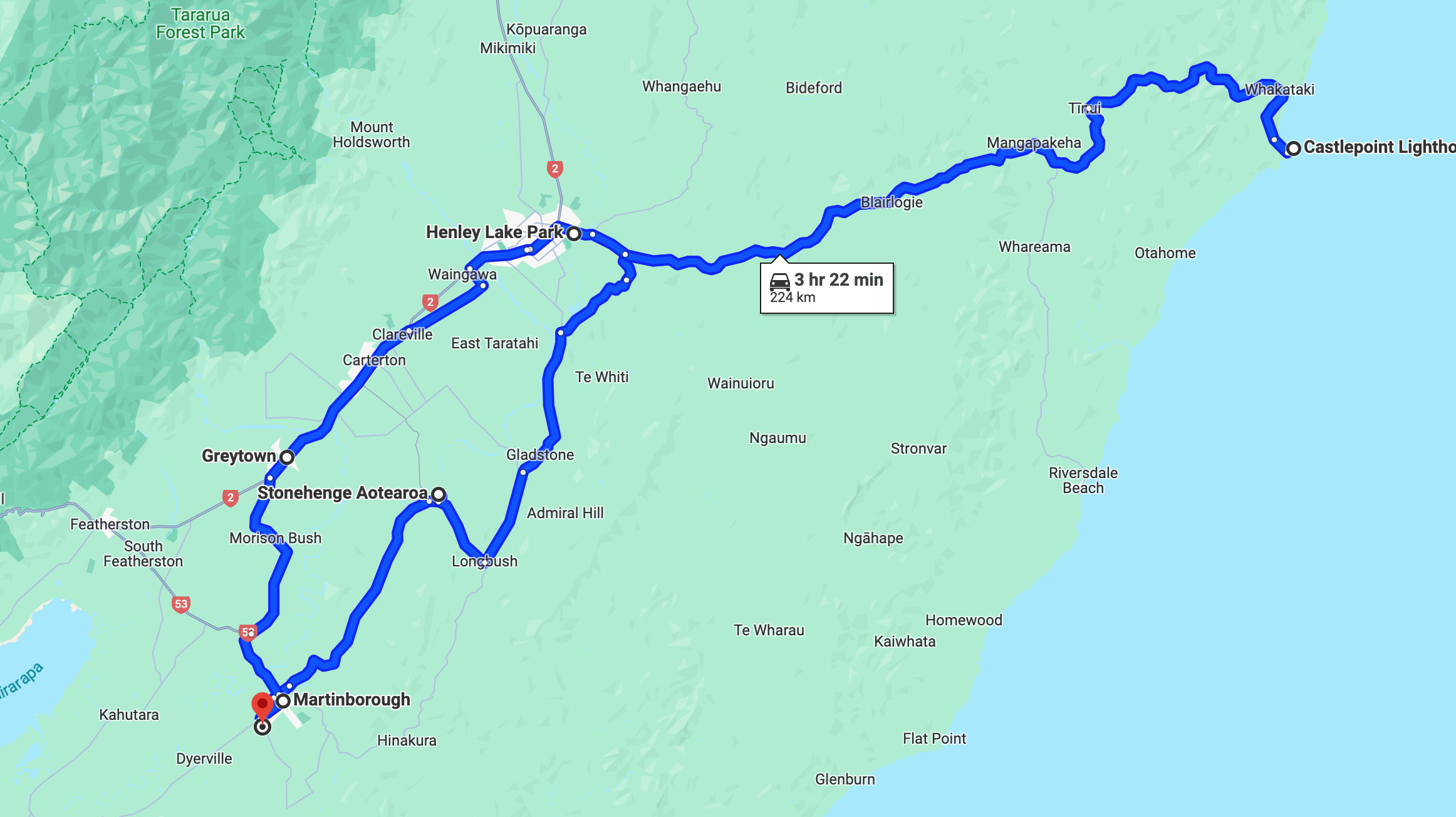
The next day began with a quick check of the battery level; the overnight charge had brought it back to 96%, indicating 535 km range available. So the iX was ready and waiting for the drive ahead of us today as we headed out to Castlepoint.
Our first stop was in Martinborough township, just 2.6km away from Brackenridge, for breakfast. Martinborough is known for being one of the country’s prime wine locations, being famous for the exceptional quality of its Pinot Noir wines. The town has a population of around 2,000 people and like most country towns, the town square is right at the heart and is where the action is. Surrounding the square are cafes, bars, boutique shops and the beautiful Martinborough Hotel. We stopped into the In The Neighbourhood Coffee House, which has a great range of freshly made food, with a wide range of organic options from the cabinets too. We stopped in for breakfast and a coffee to go.
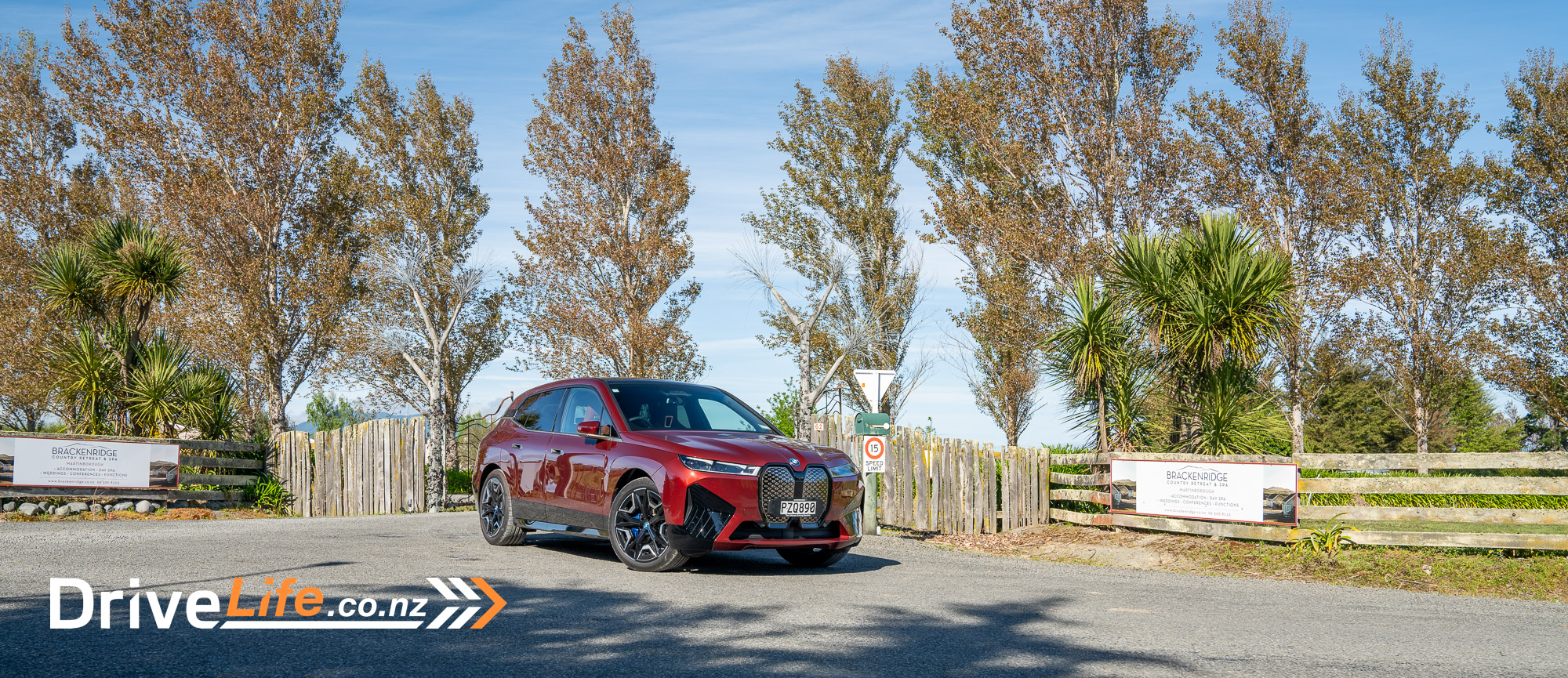
The next stop was Stonehenge Aotearoa 19.1 km away. Stonehenge Aotearoa is New Zealand’s unique open-air astronomical observatory, built following ancient knowledge of the stone circles and adapted to the conditions of New Zealand. We took the self-guided tour of Stonehenge Aotearoa. After an introduction, we were provided with a map of the Henge and a 15-minute audio-visual that explains how the Henge works. Then, with a map in hand, we explored the stone circle. If astrology or astronomy is your thing, you will find Stonehenge just as interesting. Once we had explored the solar system and our true meaning, it was time to head out to Castlepoint Lighthouse.
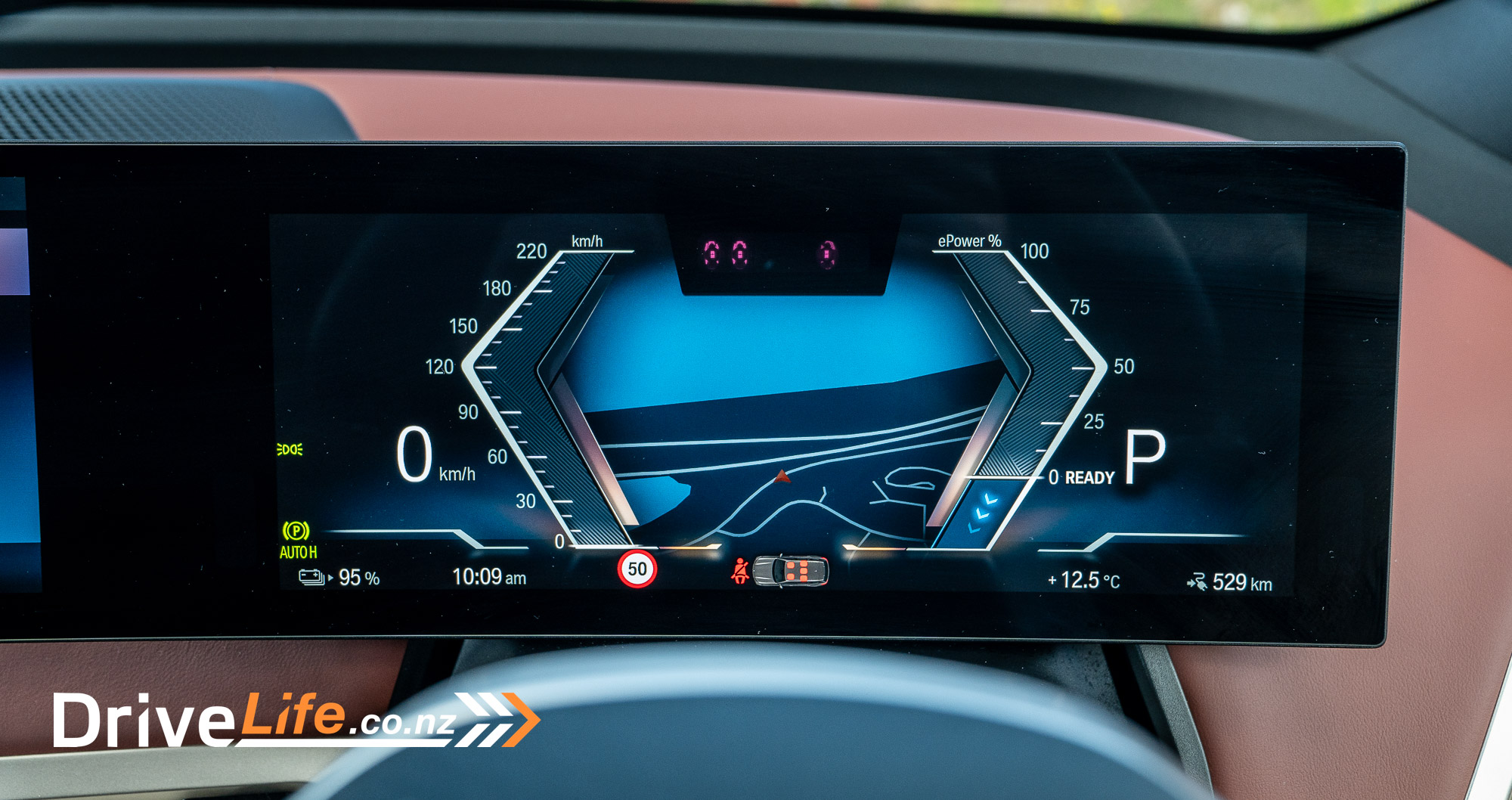
It’s 90 km to Castle Point and this is where Efficient driving mode comes into its own – especially when you’re travelling across a region with a low number of charging stations available. Essentially, Efficient driving mode provides driver aids to help you drive in a more efficient way. For example, the Heads-Up Display (HUD) changes to a diamond that is split in the middle. When you press the accelerator pedal, a line moves up on the diamond and there are also two other lines which create a range band for you to keep the accelerator usage within. This in turn aids you in driving more efficiently. The main driver’s display has similar features, but it also shows you how much additional range you have gained due to the increased efficient driving style. Over the weekend, I managed to get this up to 180 km of extra range. This would suggest that the range is over 700 km if you drive efficiently.
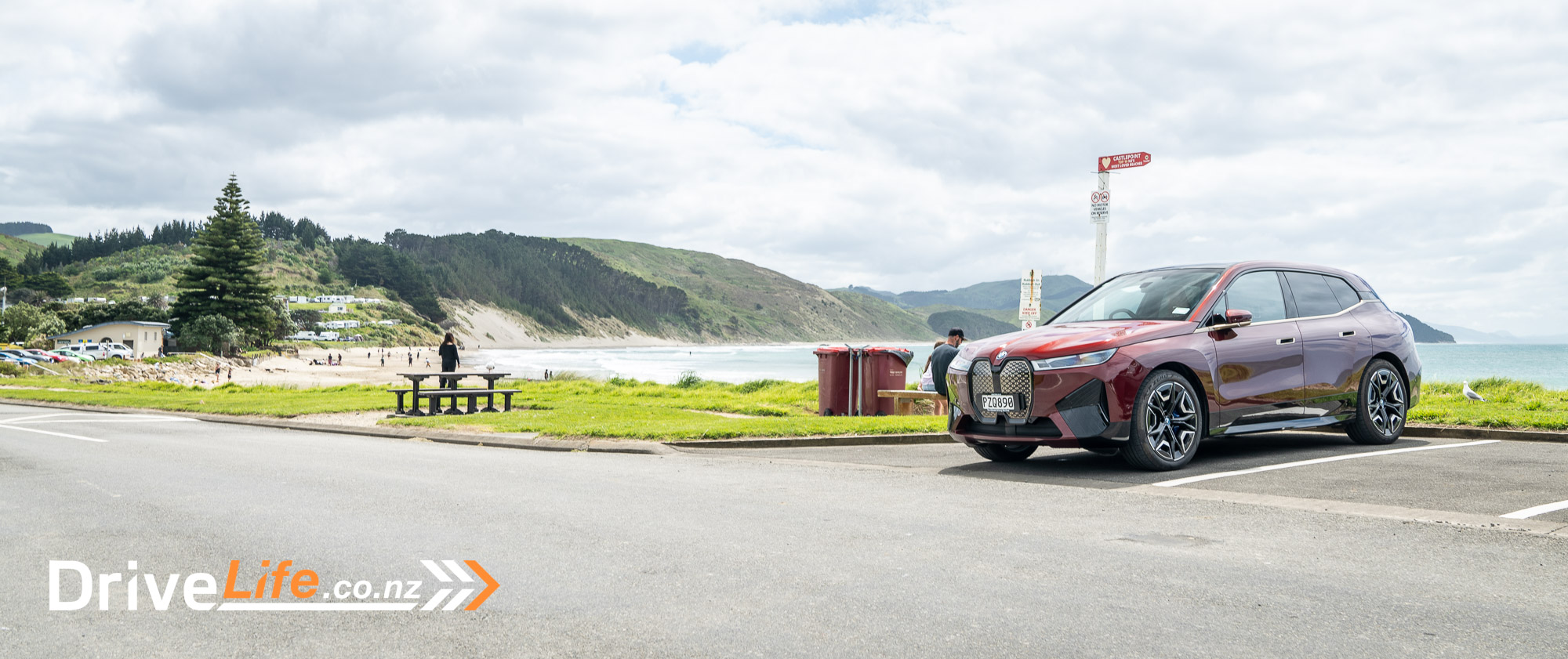
The road to Castlepoint is a windy one, another great driving road that crosses hills, valleys and forests, finally opening out onto the coast and Castlepoint township. Being Labour Weekend, Castlepoint is busy, and all its campgrounds were packed with campers, caravans and tents. Families spread across the beach with kids running in and out of the ocean. The main town is pretty small, with a few small shops and takeaways. We had already planned to have a picnic here, but first, we climbed to the Castlepoint Lighthouse. It’s a short walk from the coast road parking and if you want, you can even park on the beach at the end of the road. The lighthouse is 52 metres above sea level, striking out into the ocean. The surrounding rocky outcrops are home to many seals, some of which we could see as we walked up to the lighthouse. At the top, you have a great view of the surrounding area and town. Once back at the car we found a table along the beachfront and had our picnic. Strangely, the seagulls at Castlepoint are some of the most polite seagulls I have ever seen. There were loads around; one landed, squealed, got nothing and then left, and we never got interrupted again – very surprising for a beachfront location.
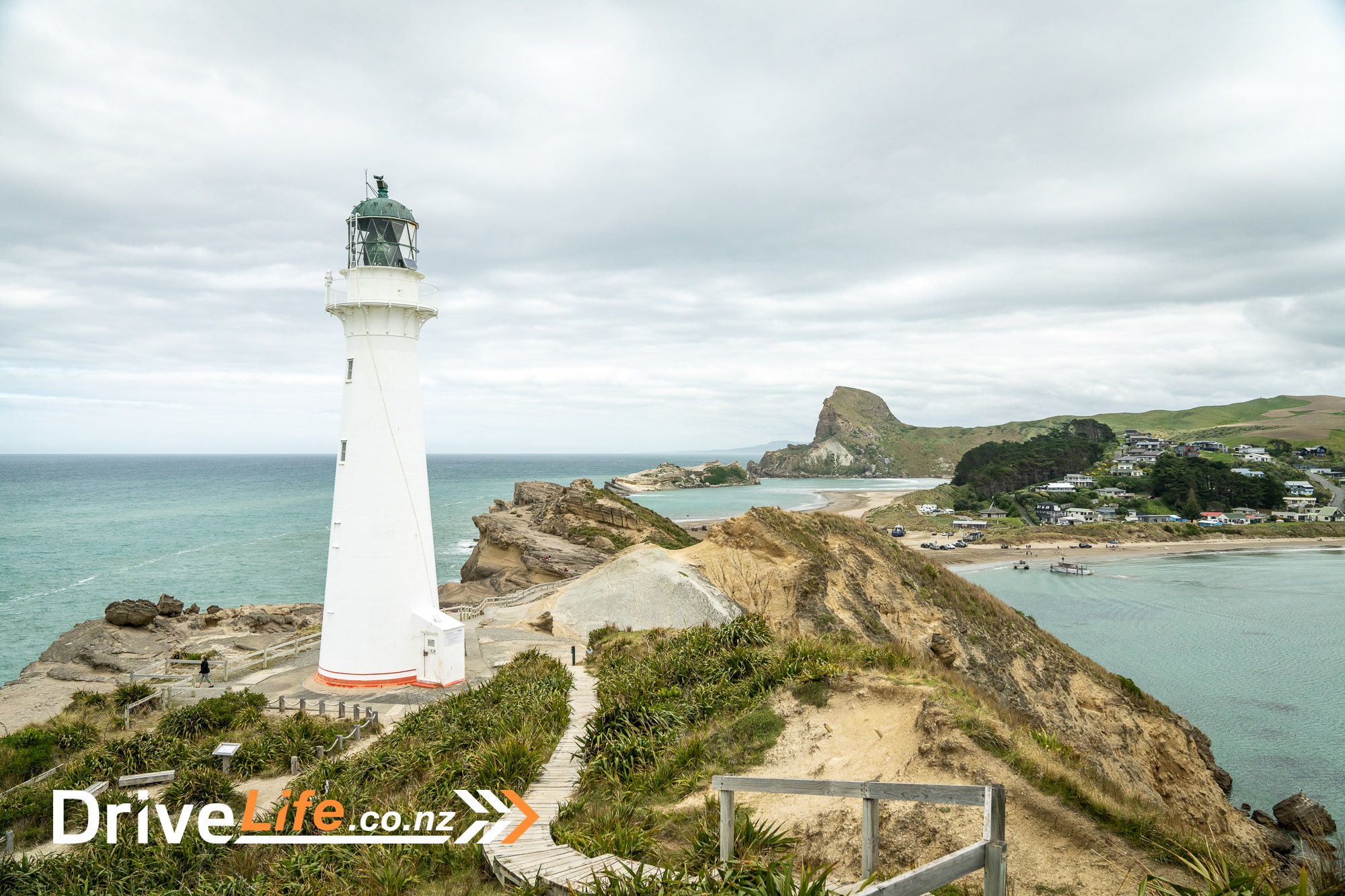
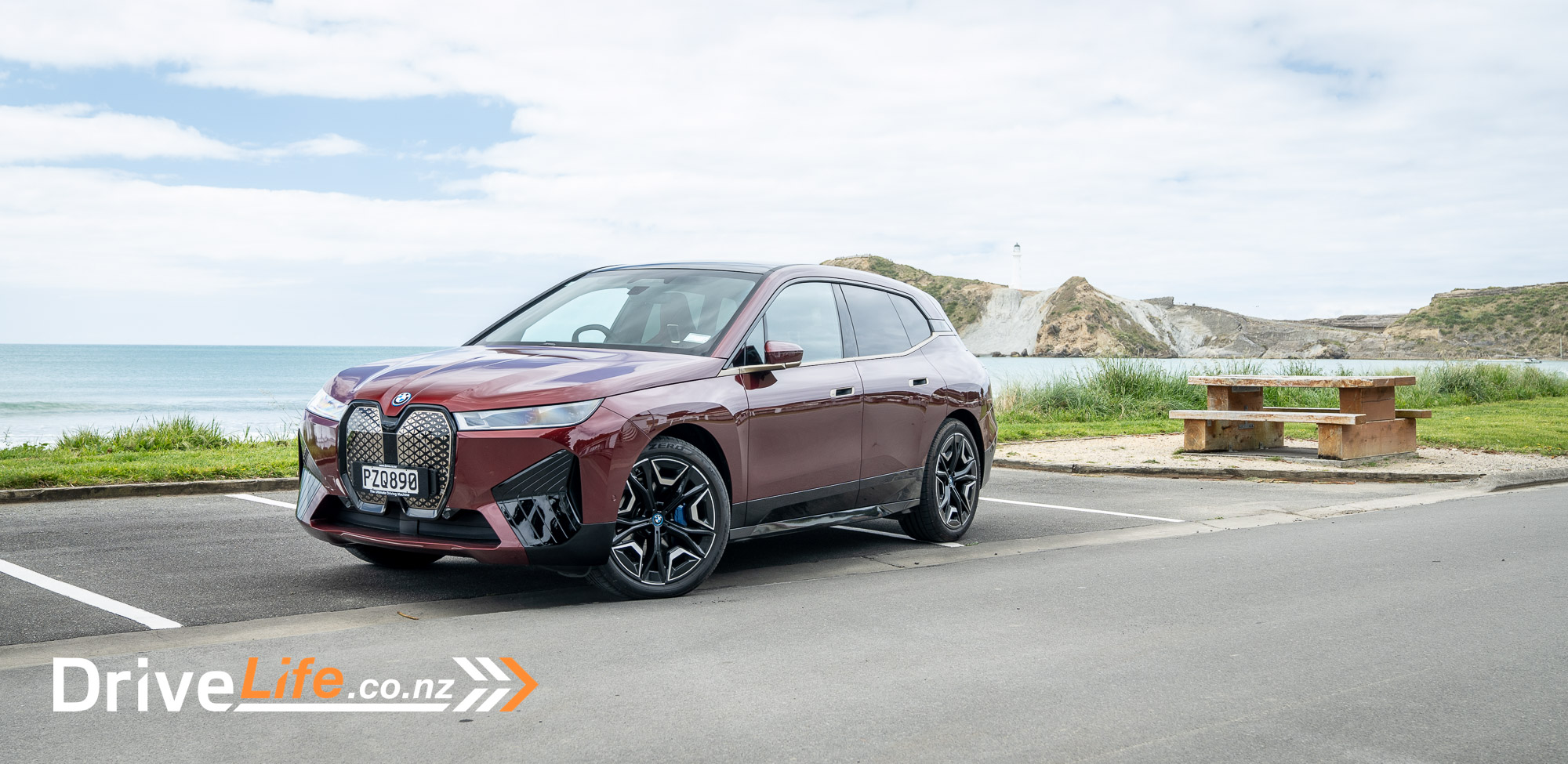
After our picnic, it was time to head to Masterton and Henley Park. The road back always seemed quicker, but it was just as fun to drive. Once in Masterton, the battery level was at 62%, so I thought after we visited Henley Park, we would stop off at one of the local charging points for a quick top-up. Henley Park has a big lake and is surrounded by lots of walking trails, so it’s a great place to unwind and enjoy the moment.
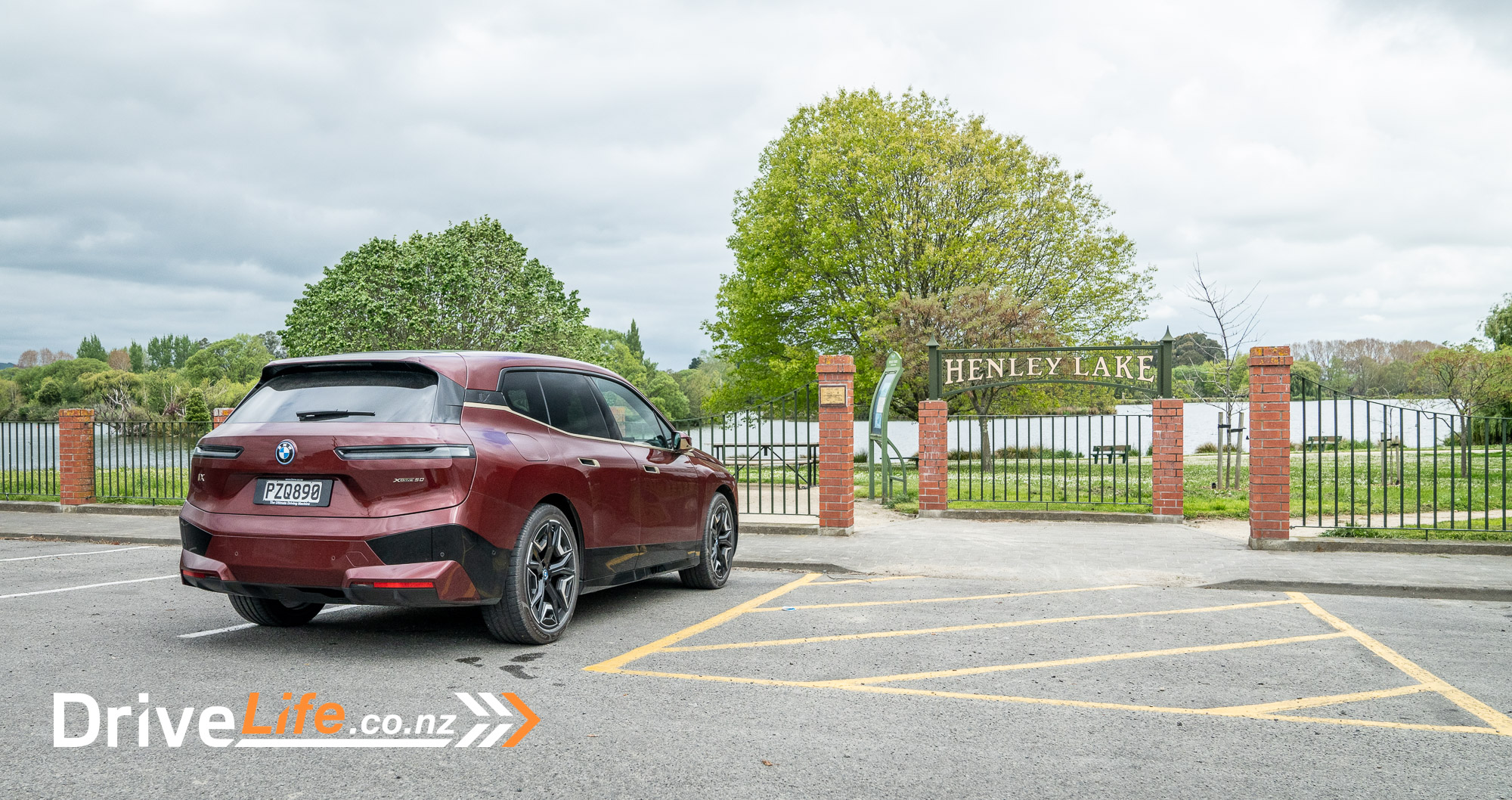
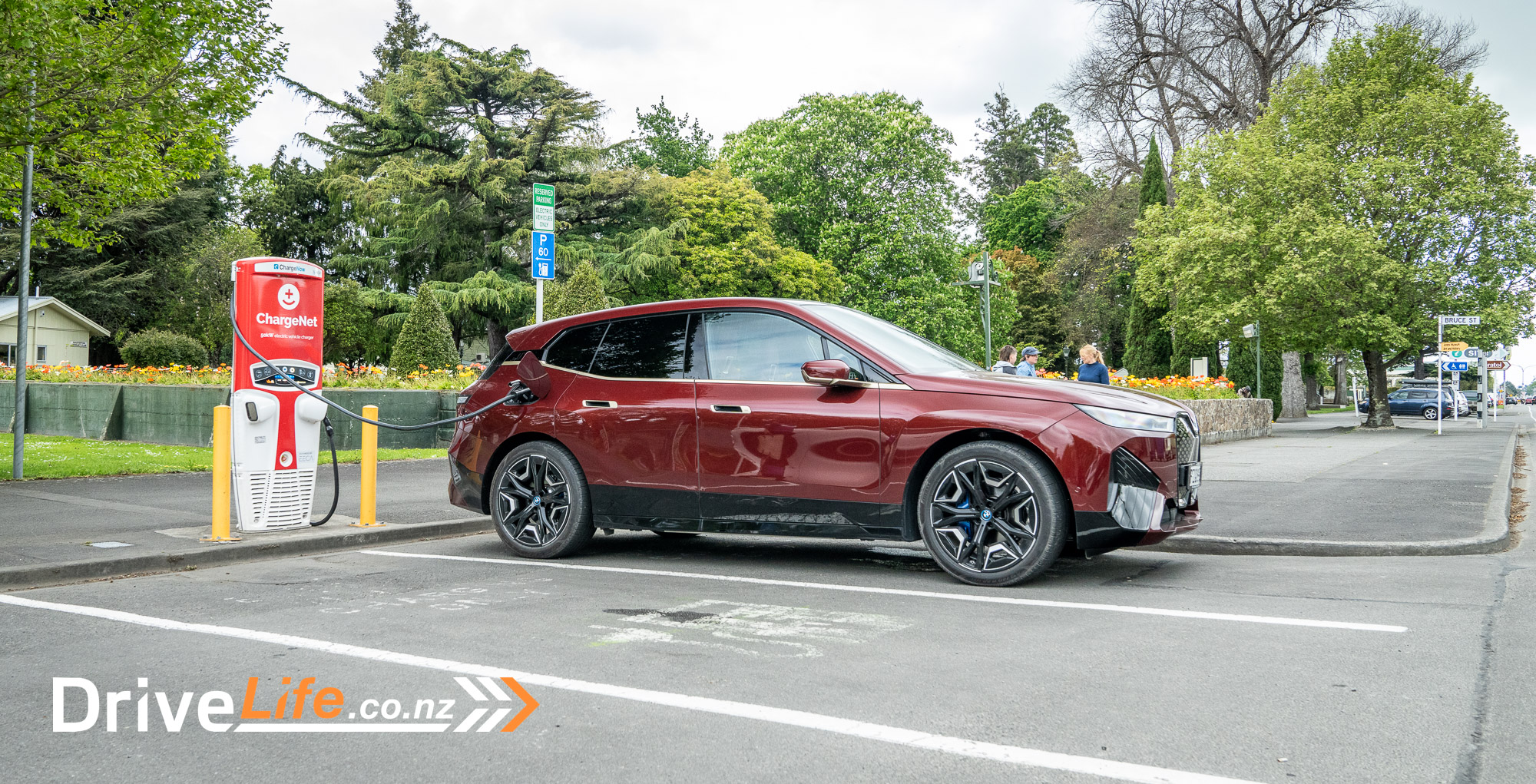
Our final stop was in Masterton for a recharge. If we can fill to 100% that would be great, but 80% would do just fine. I plugged into the ChargeNet charger, activated it on the app and we went for a walk. It indicated that it would take an hour and a half to get to 100%. As it was late in the afternoon, most of Masteron was closed, but it was good to stretch the legs again after the 40-minute drive. Another car was using the charger when I returned, and I found out that when a car reaches 80%, if there are other users queuing it will disconnect from your car, so others can use it. Regardless, 80% was easily enough so we made our way back to Brackenridge. By the end of Day 2, we had covered 224 km.
Day 3, Sunday: Martinborough to Cape Palliser Lighthouse
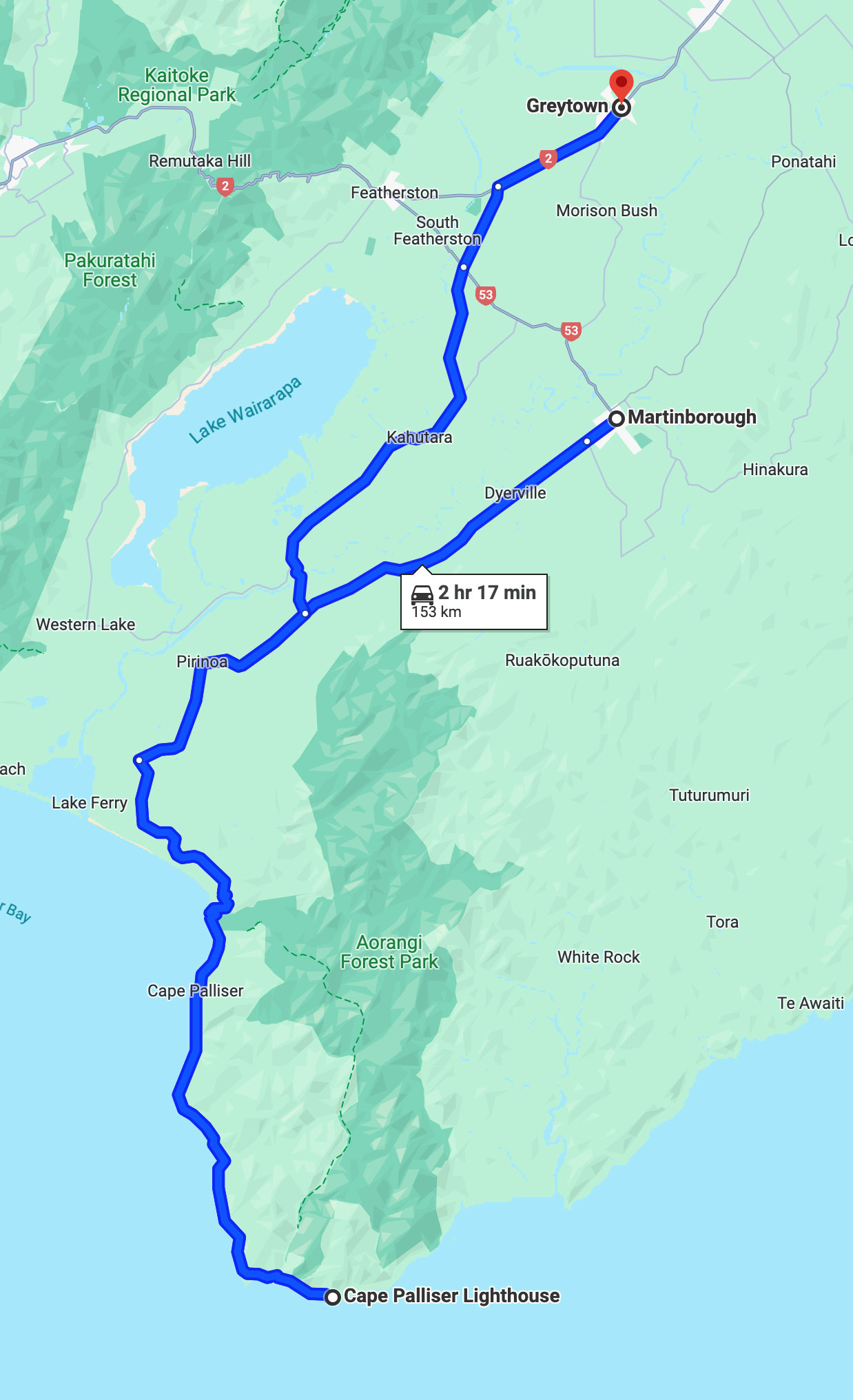
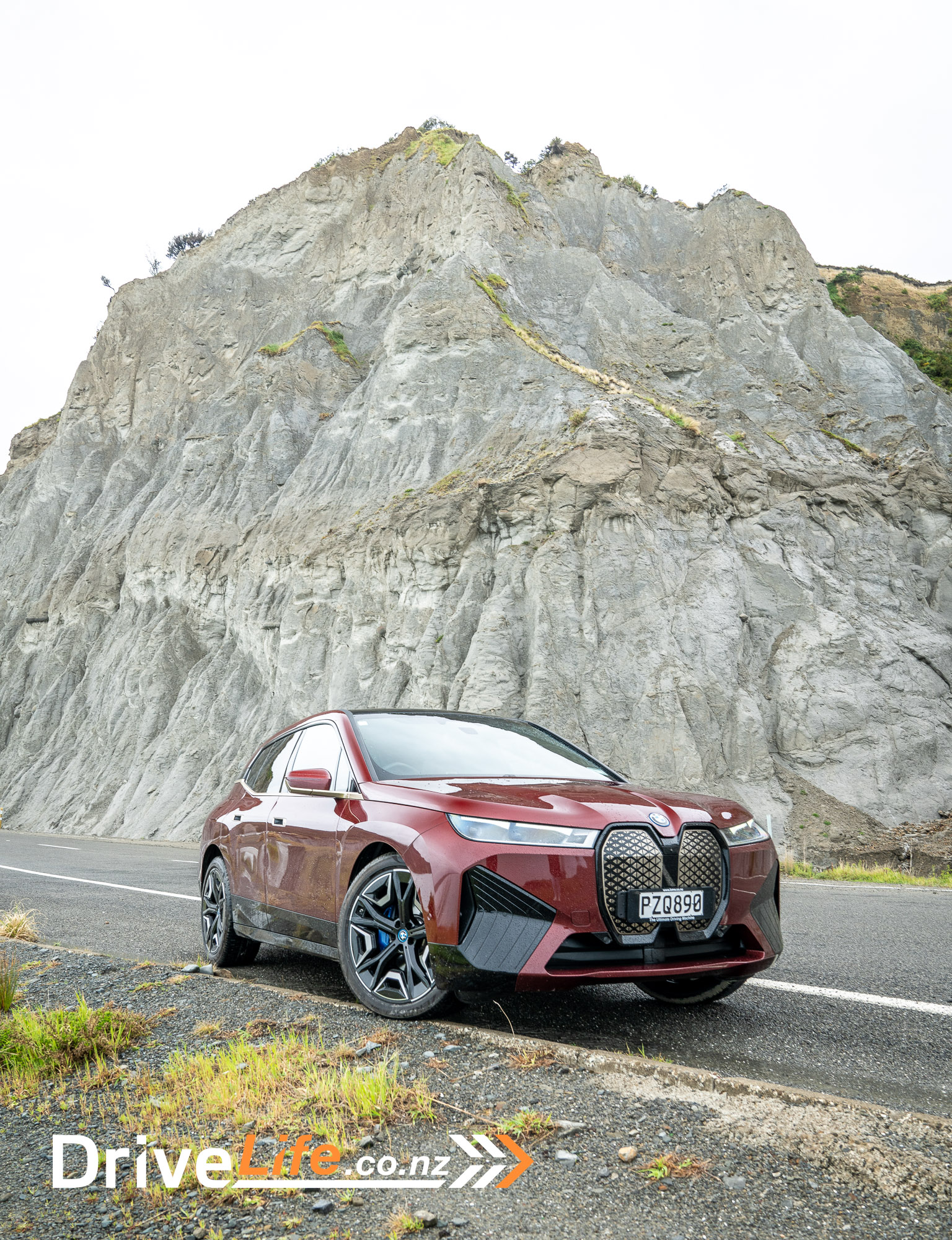
So far I have had no issues or concerns about being able to charge or running out of charge on the trip, which was nice. This really shows how far BMW has come and the level of products they offer. This is very clear to see with their consistent sustainability milestones in place, BMW Group aims to have a climate-neutral business model spanning the entire value chain by 2050.
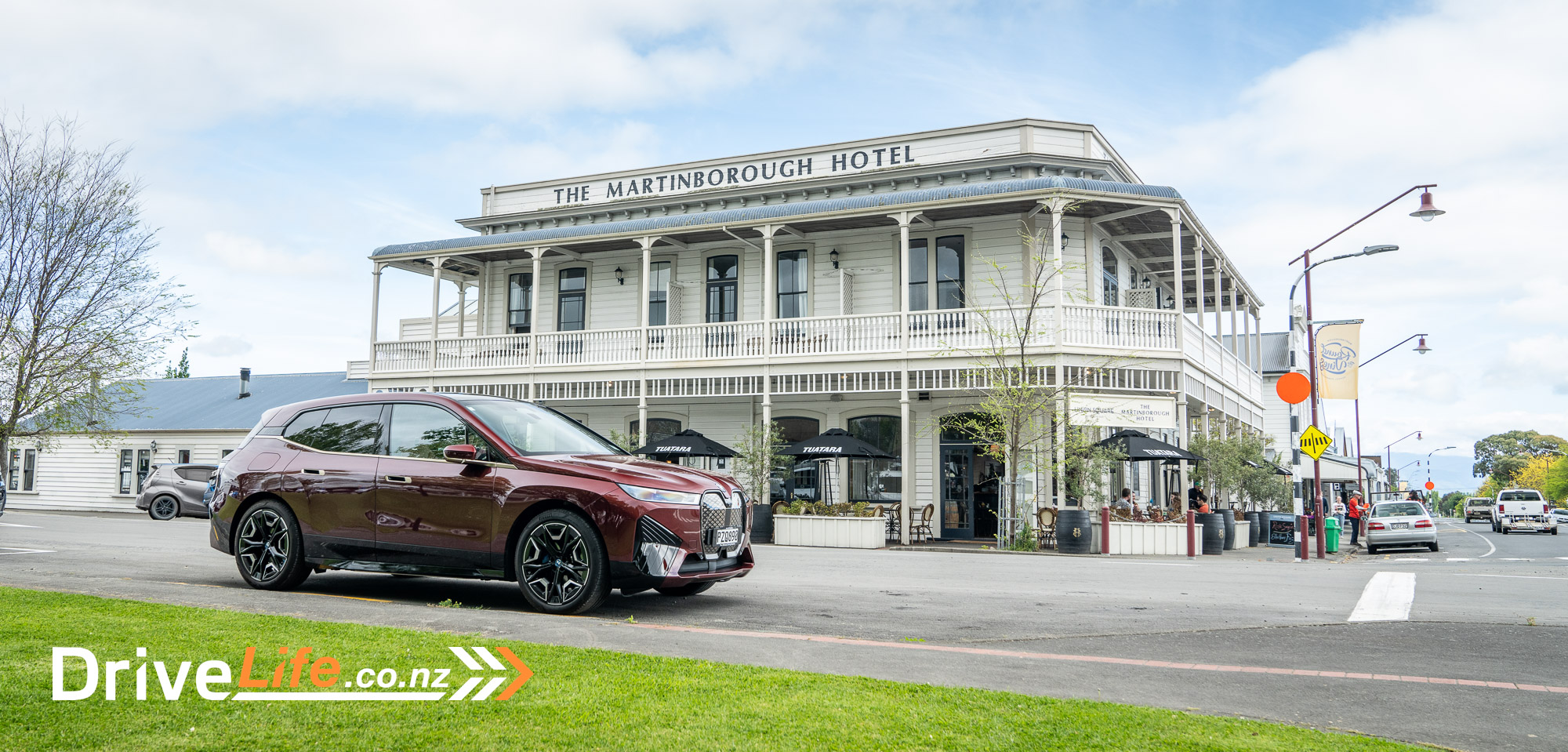
It was time to head south to the lowest point in the North Island; Cape Palliser Lighthouse. Unlike the day before, it was raining, a light drizzle which was more than manageable. First, it was a quick stop in Martinborough Square, where we had breakfast in the Martinborough Hotel. This stunning old hotel feels like it’s from a time forgotten, even more so as we got there in a futuristic electric vehicle.
We set a course for Cape Palliser Lighthouse. From Martinborough, it’s south on Lake Ferry Road, then left onto Cape Palliser Road all the way to the bottom of the North Island. It’s a great road, very scenic, with so many different landscapes along the way.
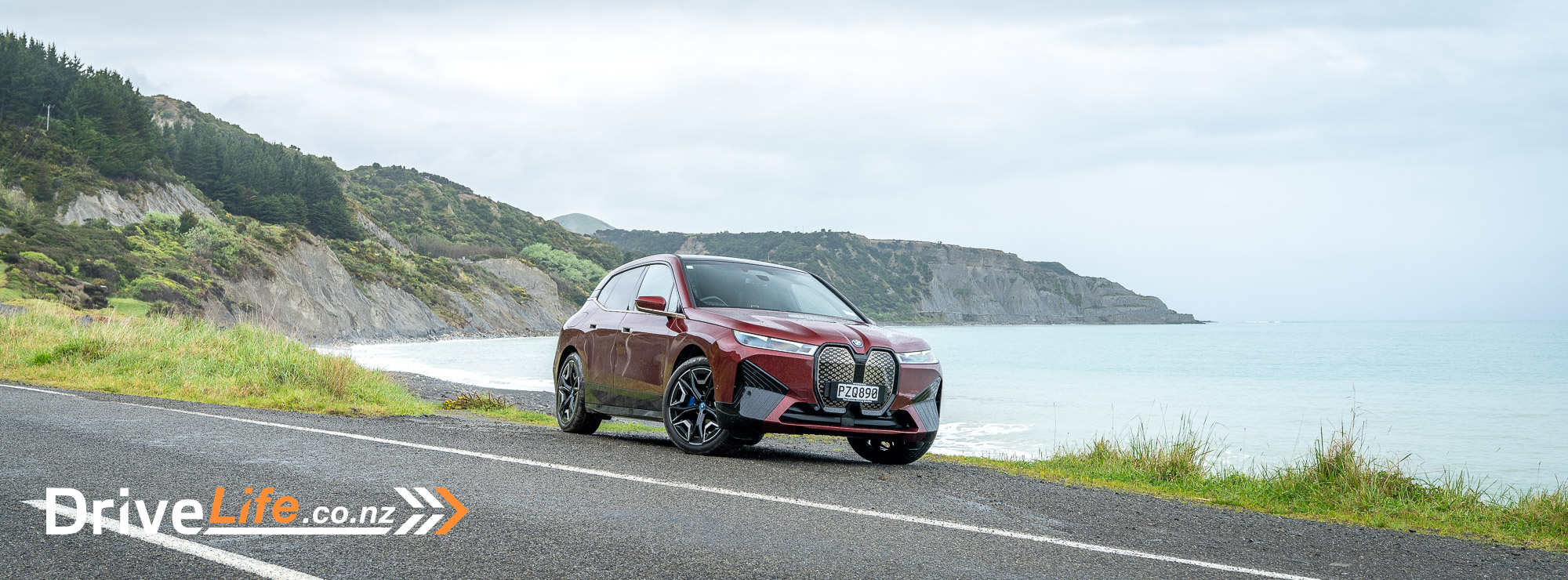
The rain had been on and off as we made our way down to Cape Palliser, and as we got closer to the lighthouse, we saw that our timing was perfect. The surrounding area of the lighthouse is scattered with rocks, and home to a seal colony – and we arrived just in time to see the baby seals resting on the rocks. There were hundreds, which was great to see.
The seals were pretty close to the road and must be used by people. Everyone who stopped was very respectful and kept their distance. This gave me the opportunity to take some great photos of the baby seals.
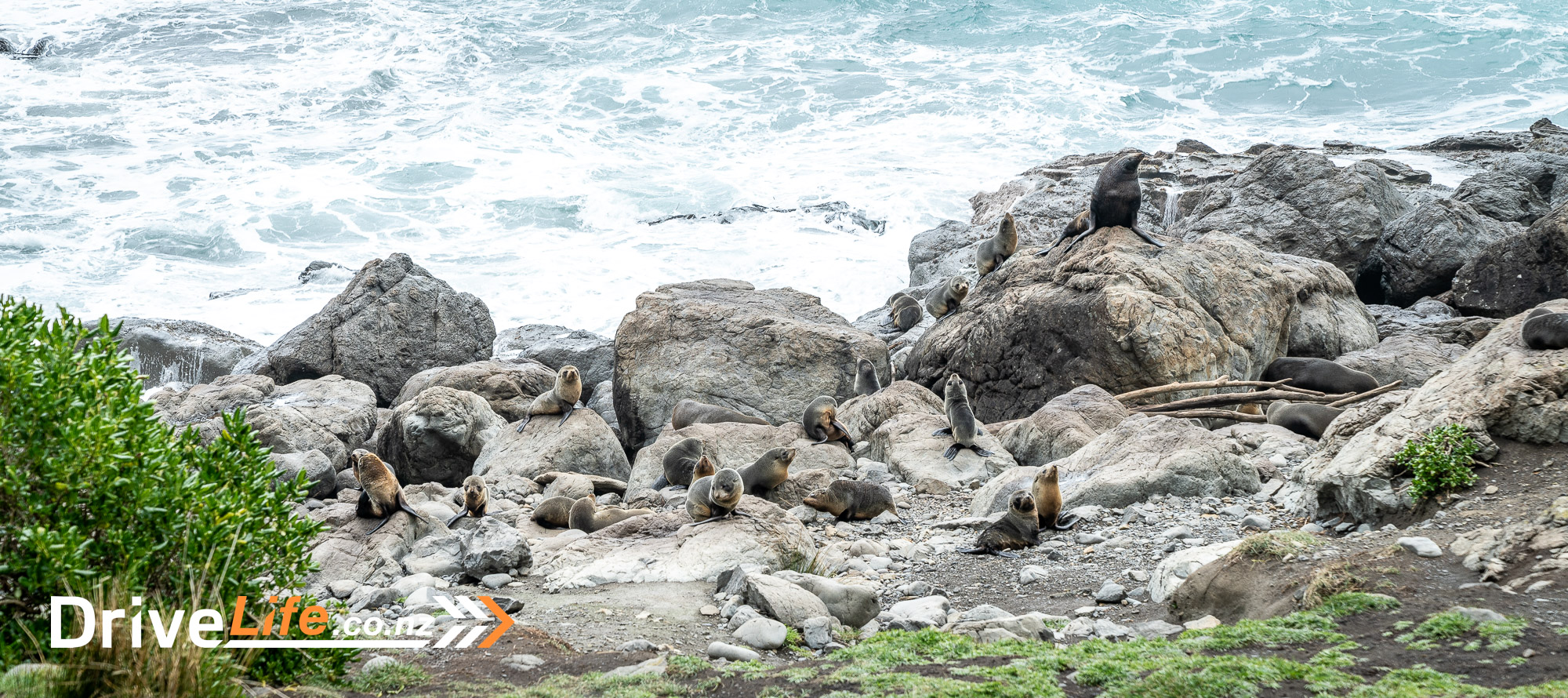
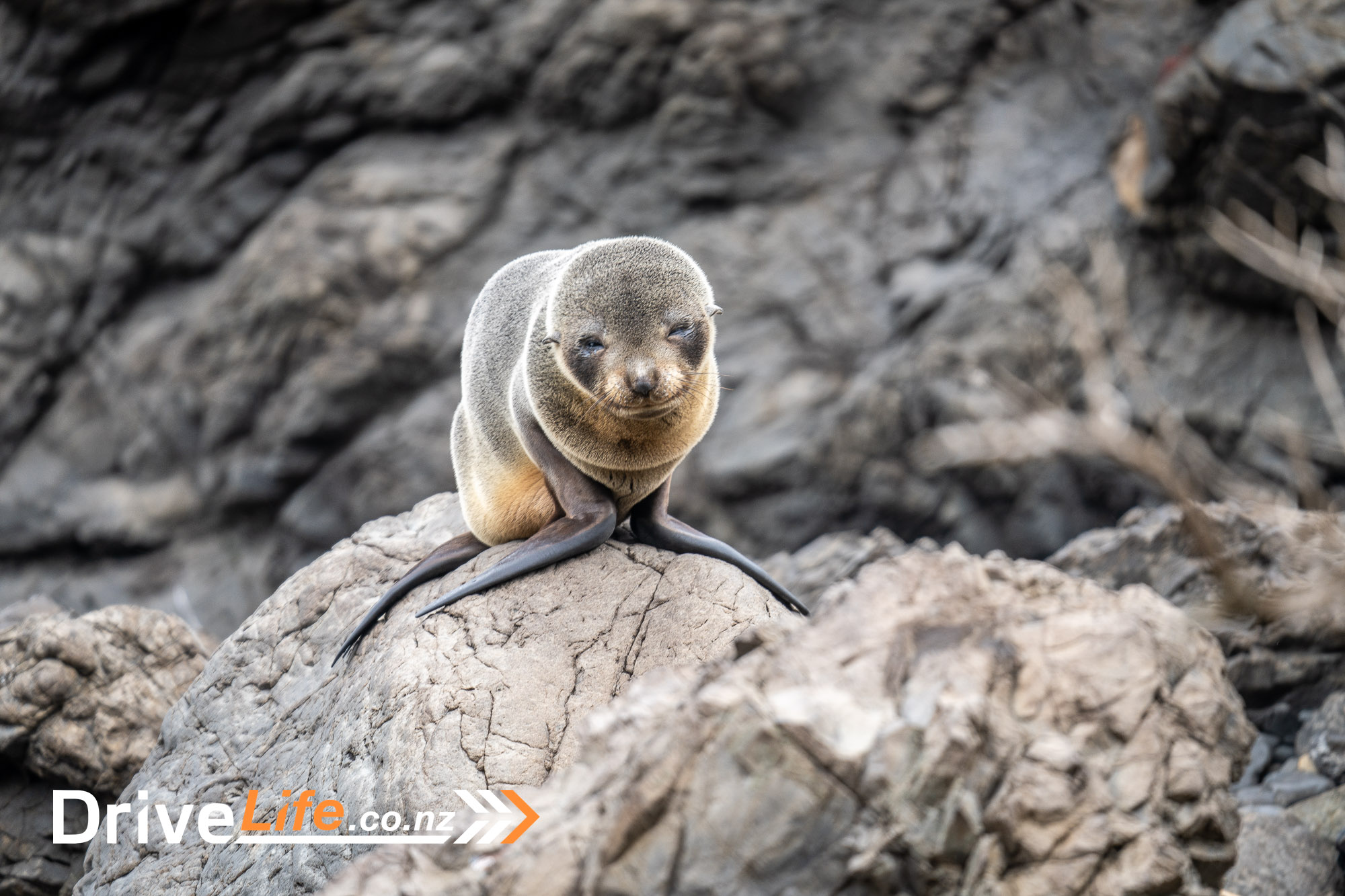
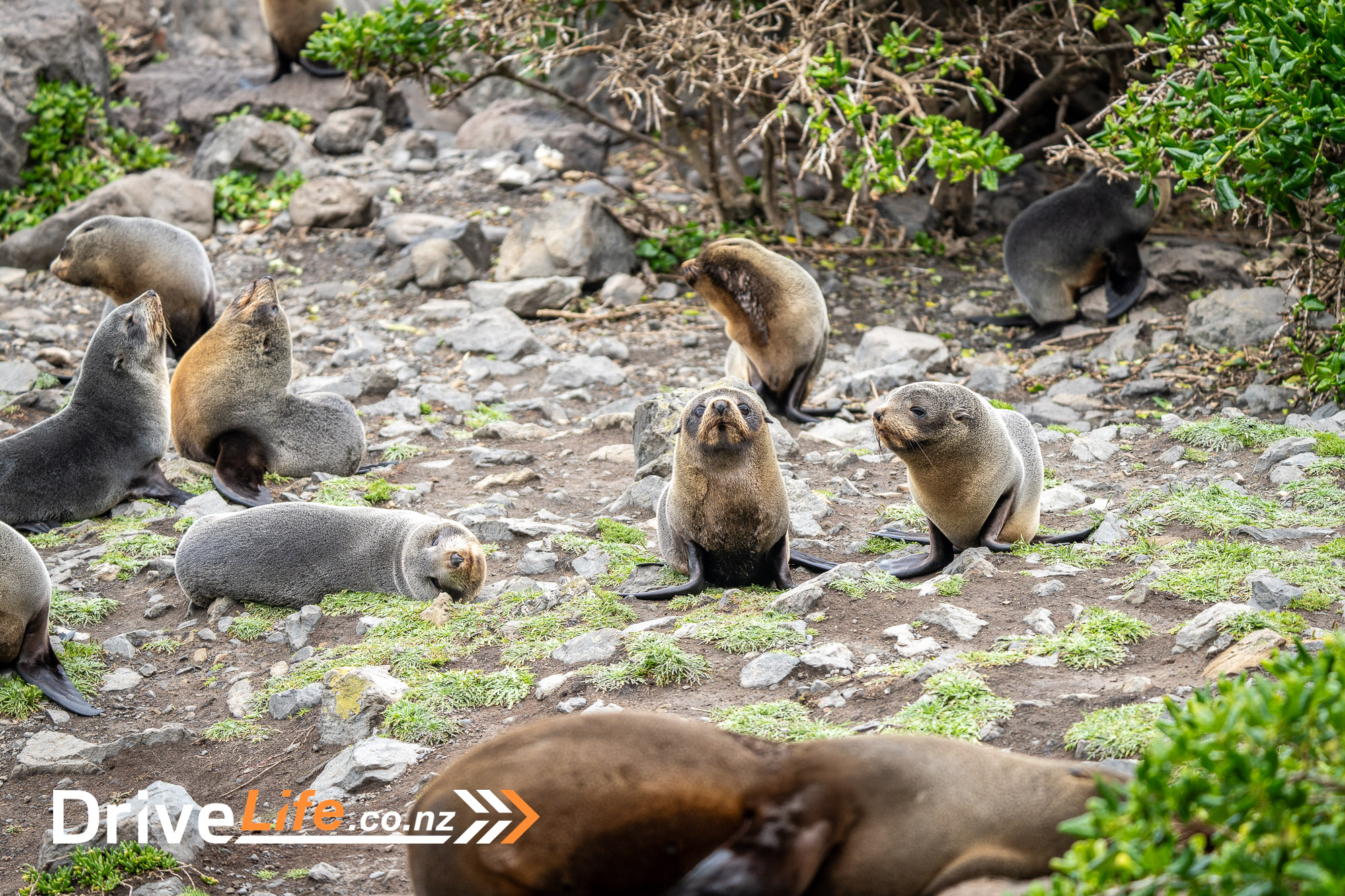
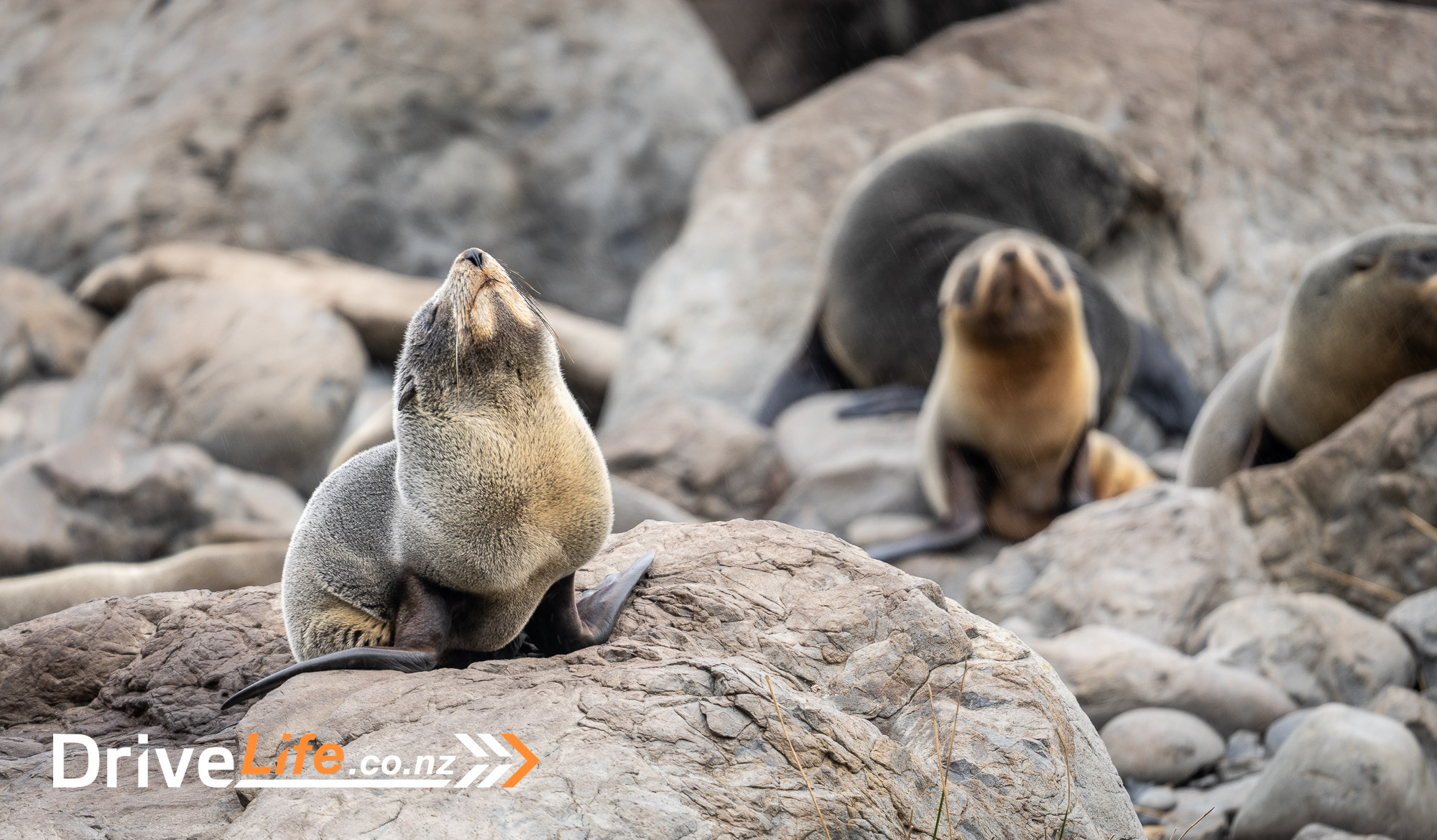
The main event awaited us, the Cape Palliser Lighthouse – and the 253 steps that lead up to it. The wet weather did make it a bit tricky as the wooden steps were slippery, but as the old saying goes, slow and steady wins the race. Once at the top and you take 10 minutes to recover, you can see that life here would have been hard. The wind was battering the lighthouse, and the rain didn’t make it any warmer either. The view was great, something you really have to see with your own eyes.
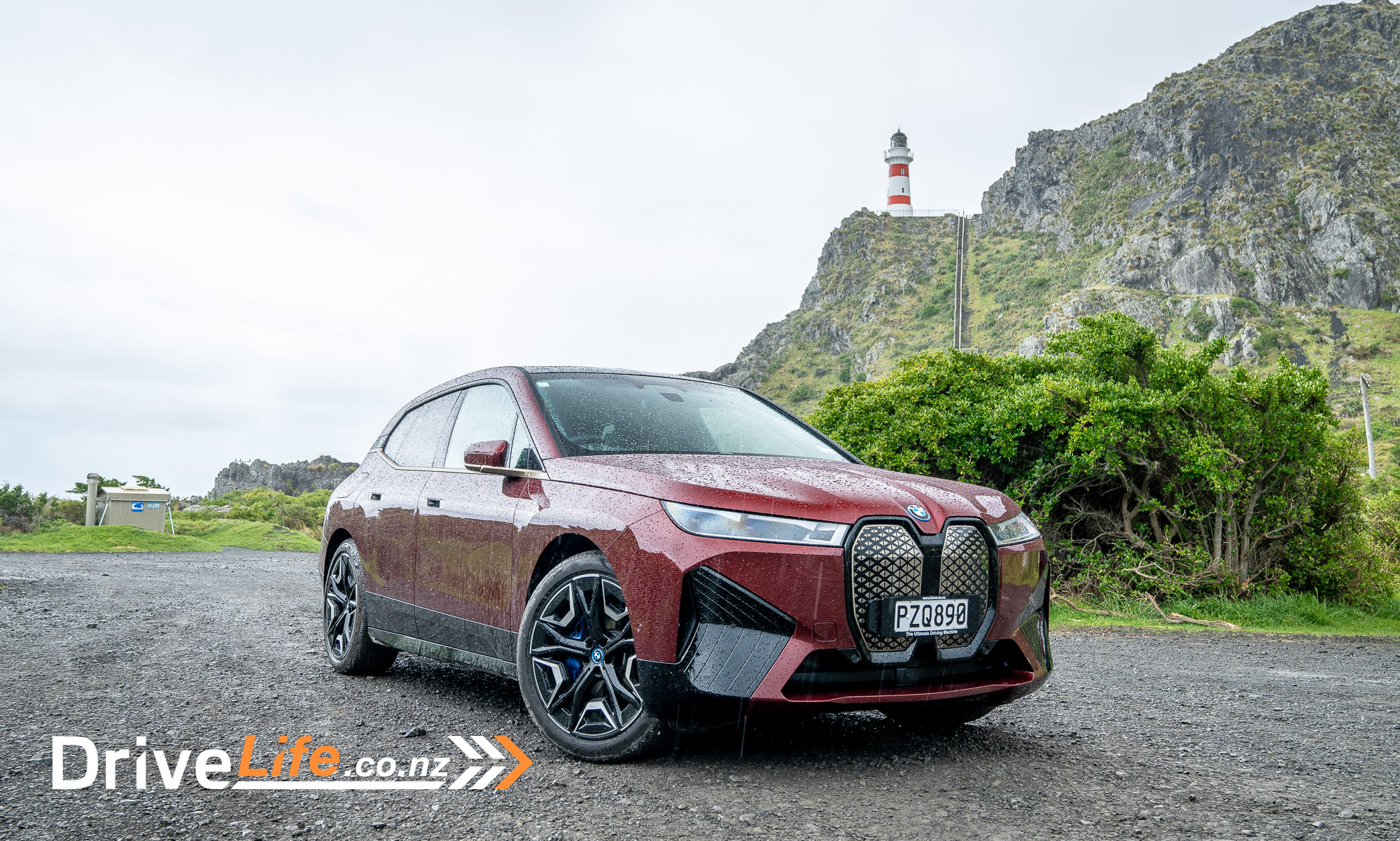
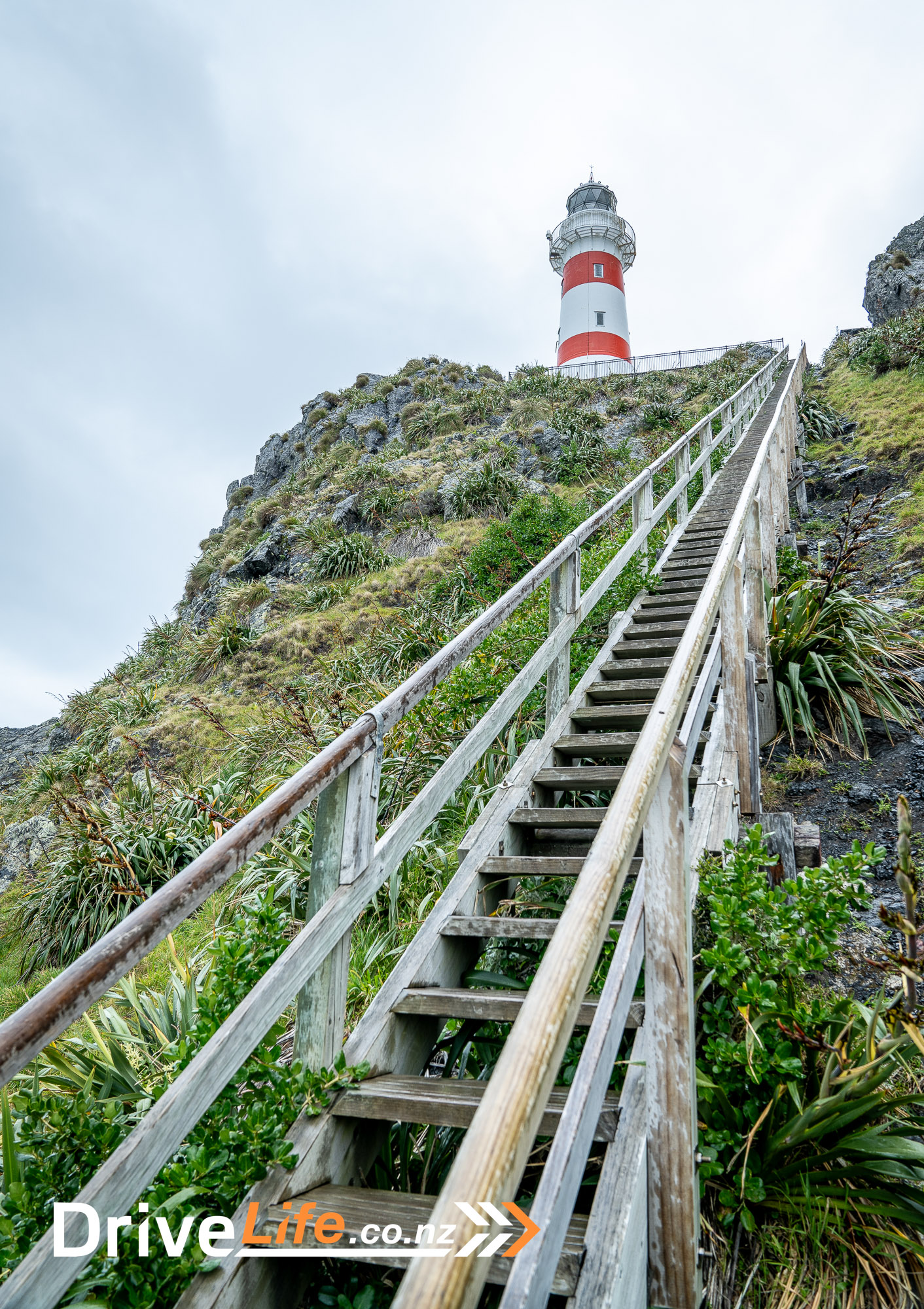
On our way back we stopped for a quick coffee in Ngawi, which is a small fishing town near the lighthouse. The fascinating thing about this town is that the entire beach is covered in fishing boats and bulldozers. Each bulldozer is linked to a trailer which pushes the boat in the water and collects it when it comes back home. The line of old bulldozers felt like they were a line of mechanical sea creatures that had crawled to land to escape the harsh weather of the open sea. Considering how simple some of these machines were, the iX is more like a spaceship than a car when compared. As we left the Cape, a quick check of the battery showed that we had 77% range available. From here it was on to Greytown for a stop at a local museum.
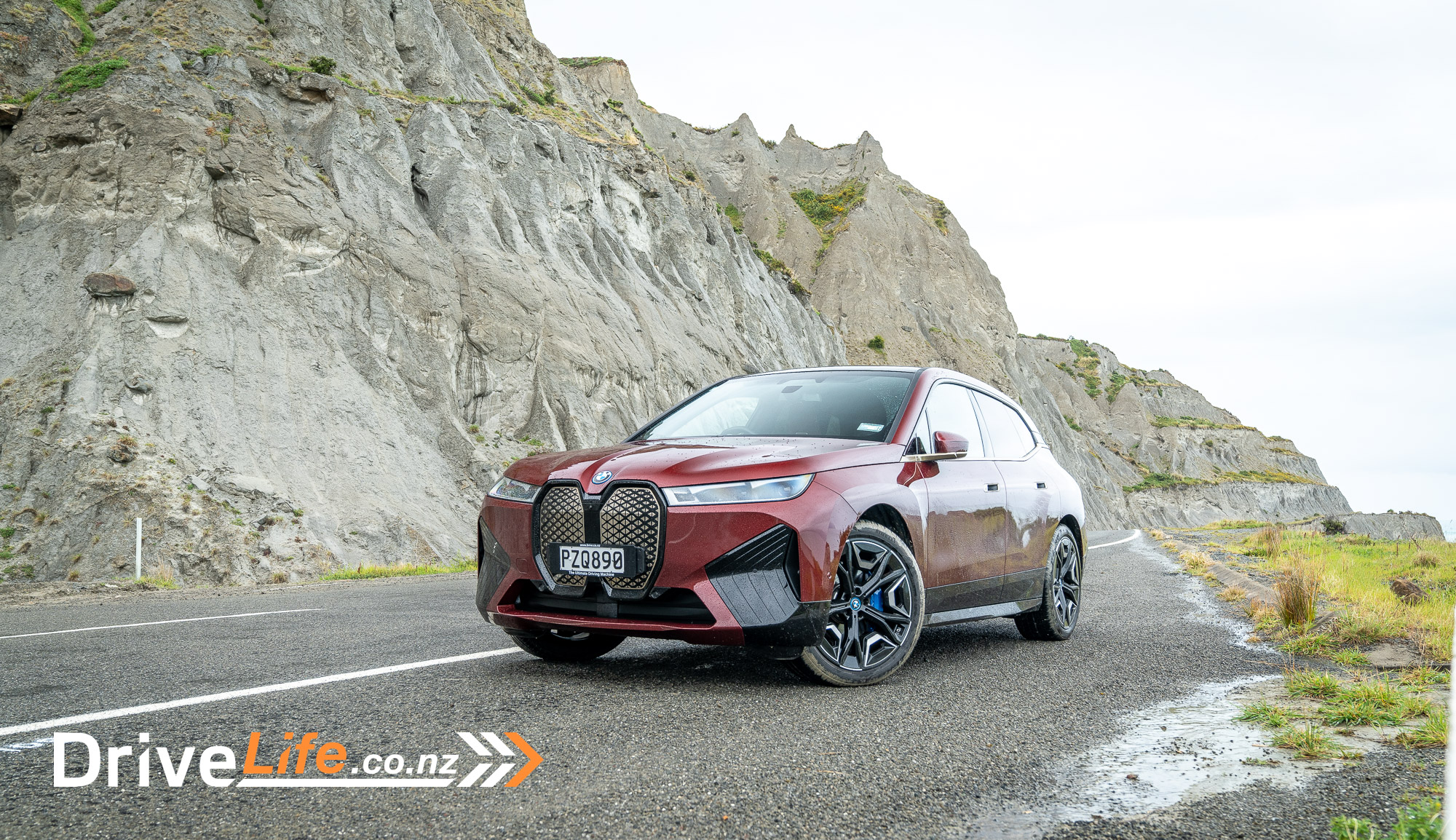
In Greytown, we called into the Cobblestones Museum, which is the origins of the region and where the early settlers started in the Wairarapa. The museum allows you to explore a working historic village right in the heart of Greytown. You can experience Victorian life at your own pace and see how early settlers lived, worked, and played in the 1800s and 1900s. If these settlers only knew that some people would be coming to see how they lived in fully electric cars, it would probably blow their minds.
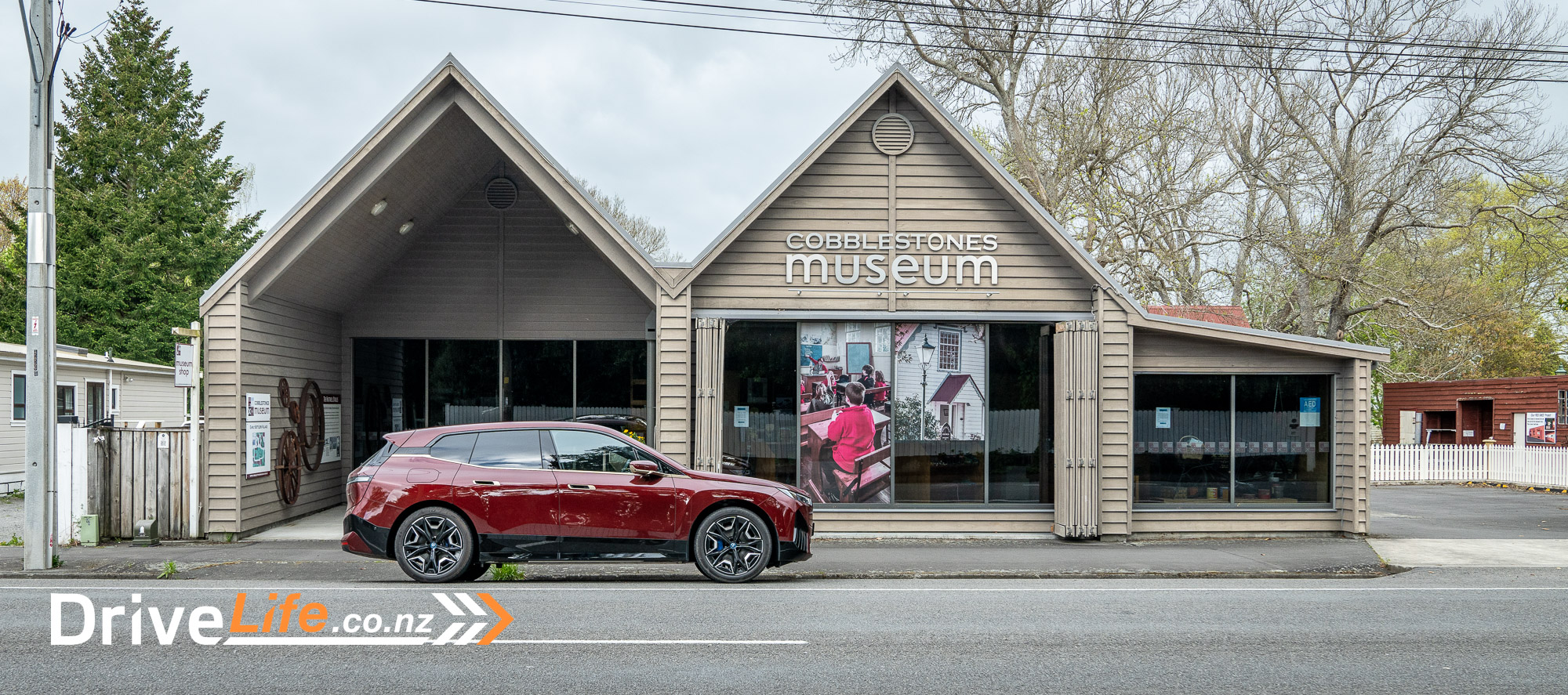
It was time to get back to the 21st century and head back for our last night at Brackenridge. At the end of the day, after 172 km the iX reported there was 60% battery remaining.
Day 4, Monday: Martinborough to Wellington
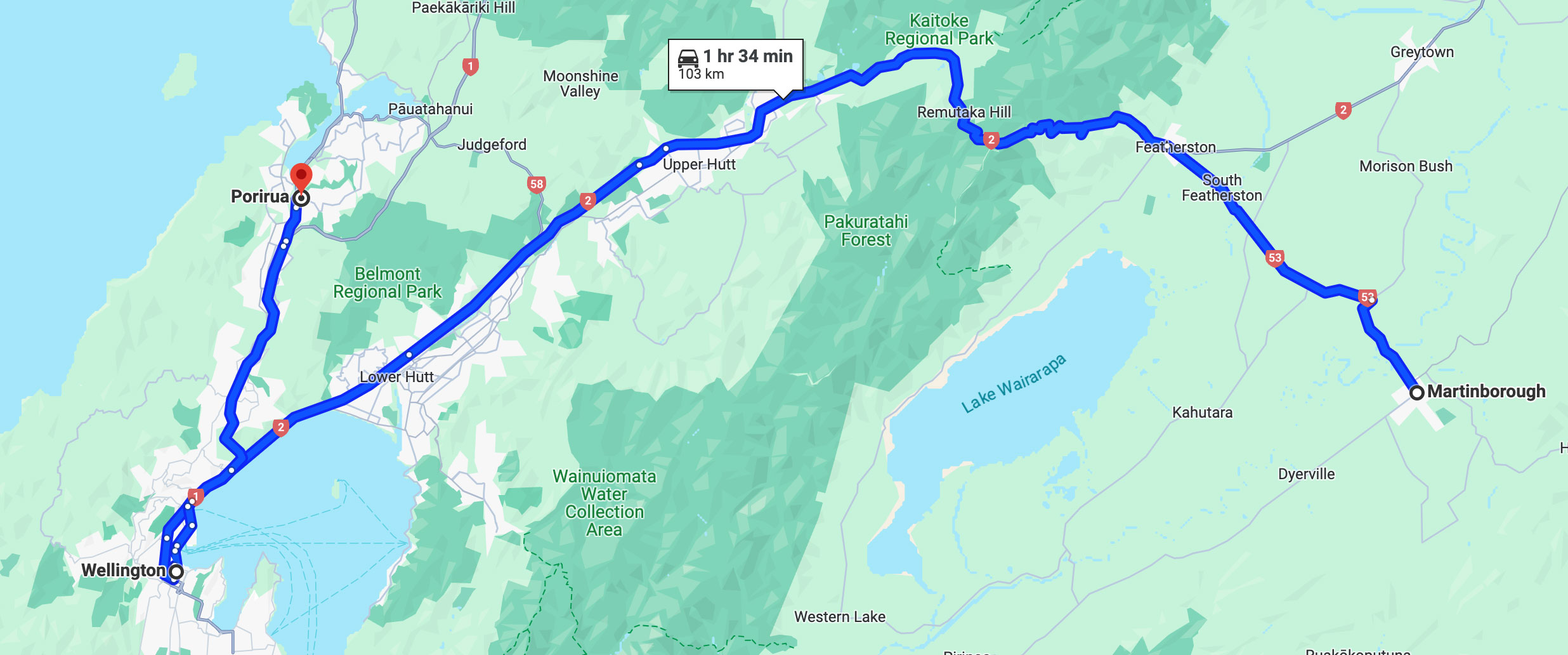
It was time to head back to Wellington, the sun was out which meant it would be a great drive up and over the Remutaka Hill to Wellington. I have purposely not charged the iX overnight so that I could see what battery it had left by the time I got home. We started our trip at 60% and everything was going great until we hit Featherston and we joined the traffic that was heading back to Wellington after Labour Weekend.
It’s not normally this bad, however, a slip had damaged a section of the road over the Remutaka Hill which left a section of it controlled by automatic traffic lights and a one-way system. It took about 40 minutes to get through, which really didn’t affect the iX much at all. Slow-moving traffic takes so little energy from the battery, it’s only high speeds that use large chunks of battery power.
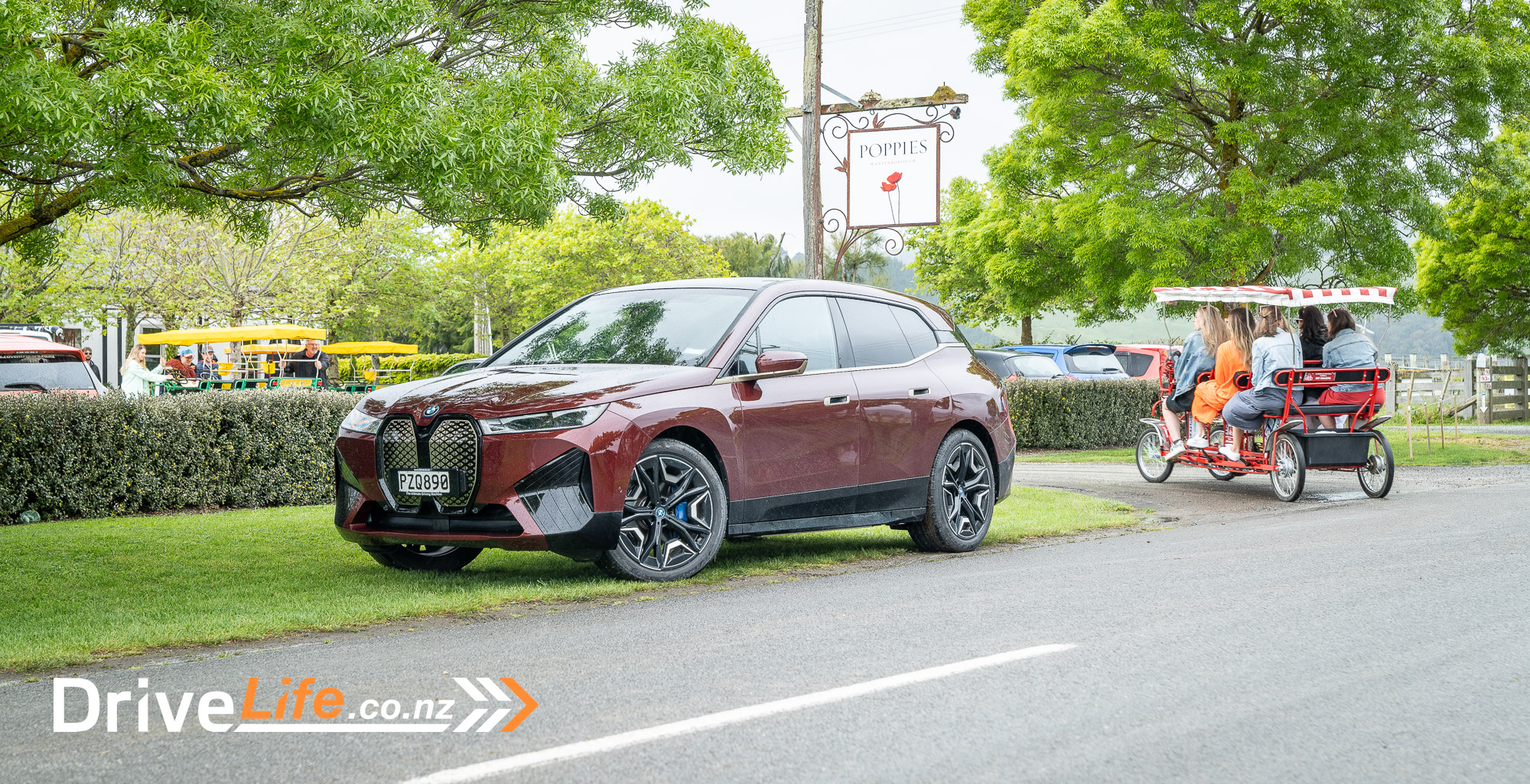
Once we were over the hill, it was smooth sailing all the way home. I was surprised to see that the trip over the hill had only used 11% of the battery, leaving us with 49%. This was the first time throughout the entire trip the battery had fallen below 50%. At home, I just plugged it in and left it to charge up, ready for its next adventure.
BMW iX: Our Thoughts
The BMW iX is a great electric vehicle; it feels just like an ICE car, but more refined as it’s naturally quieter. Over the course of the weekend, we covered more than 550 km and with the small top-ups here and there, we never had any anxiety about charging or the range available.
The spec of the iX is on point with the price, which is high. But the value is there, more so than some of the other luxury fully electric vehicles. I got a lot of comments while using the iX, even from Tesla owners. They all said it’s so striking, and that it’s great to see some different EVs on the road. I feel if this is how BMW has started, it shows they have a bright future ahead in electric vehicles.
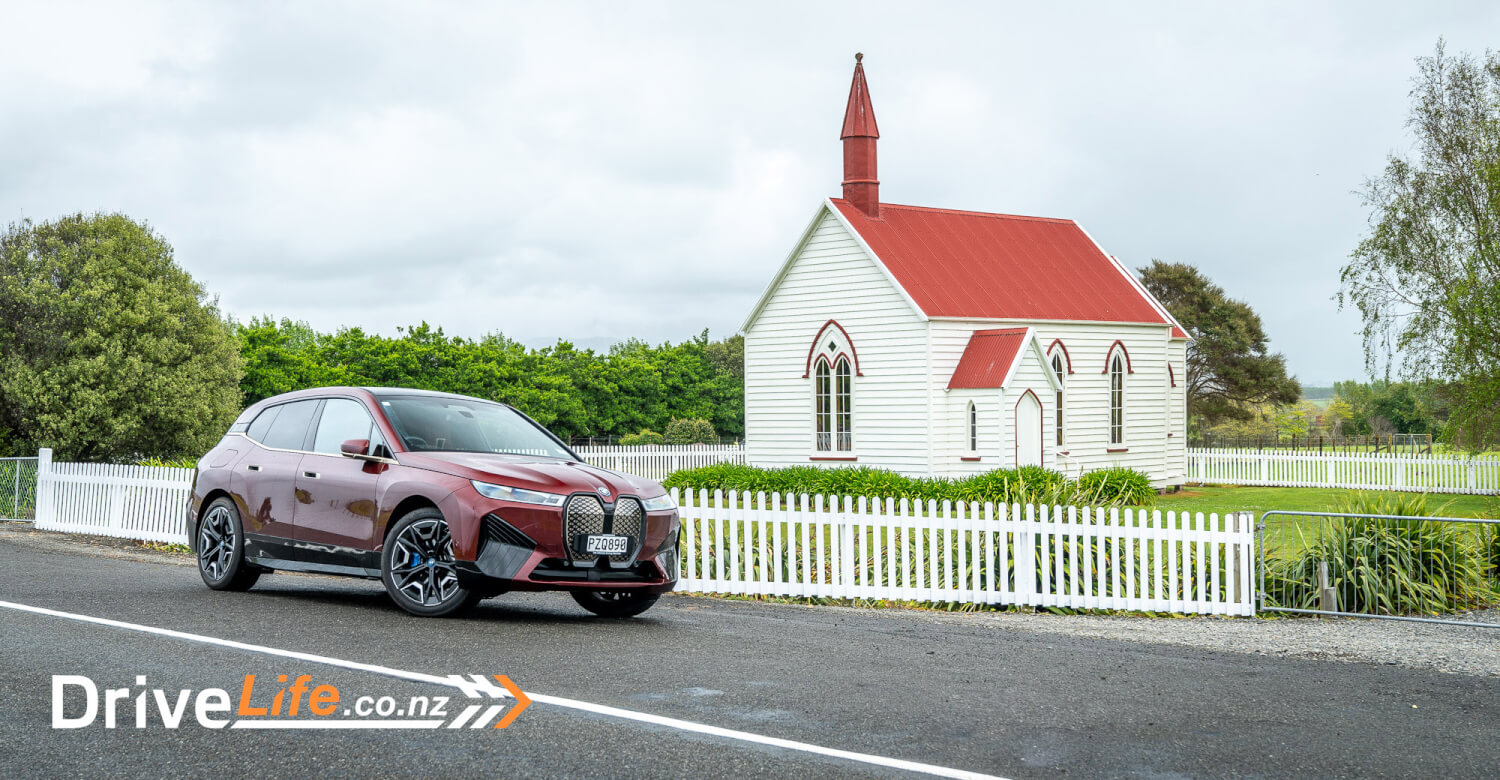
BMW indicated that its goal in the next two years is to have 25 electrified models in its product range (by the end of 2023), with 12 of these models to be fully electric. Also in 2023, the company will have at least one fully electric model on the roads in about 90 percent of its current market segments. Over the next decade or so, the BMW Group plans to release a total of about 10 million fully electric vehicles onto the roads.
If you are interested in a full feature review of the BMW iX we have reviewed both the iX M60 and iX xDrive40, links to both are below.
Keep on the lookout for the next DriveLife X-Factor Weekend in the coming weeks, where we will take the BMW iX3 down State Highway 43, the famous Forgotten Highway.
